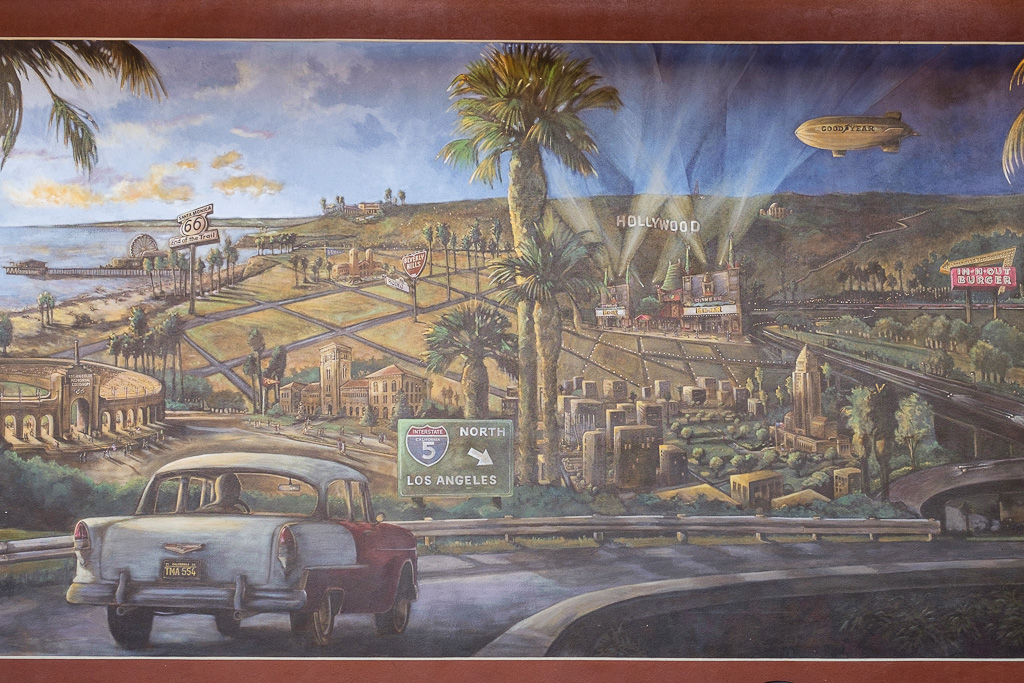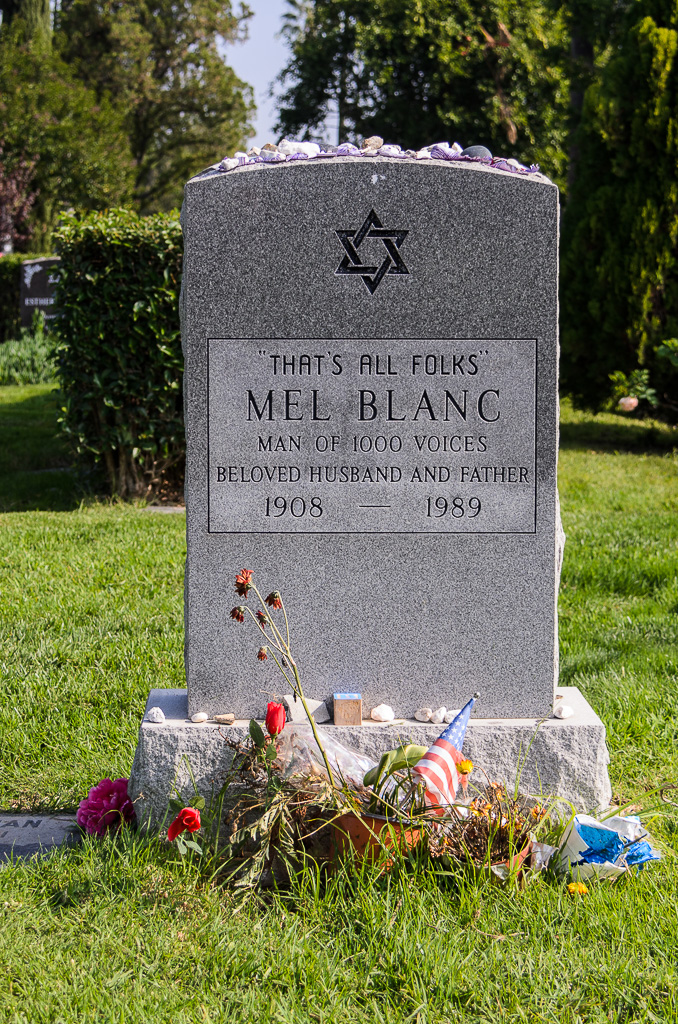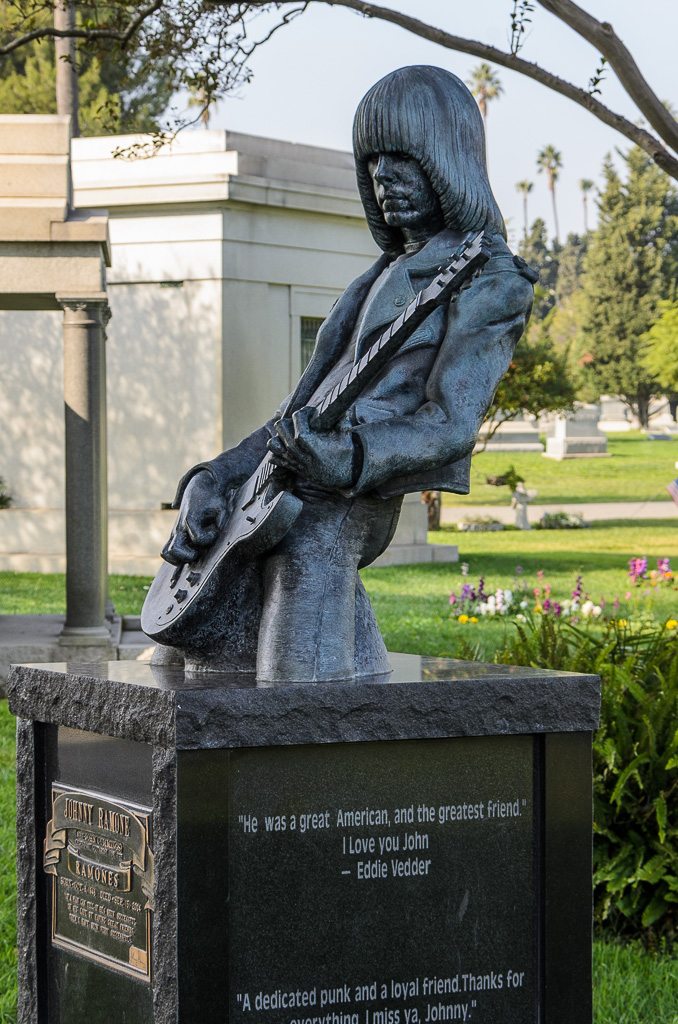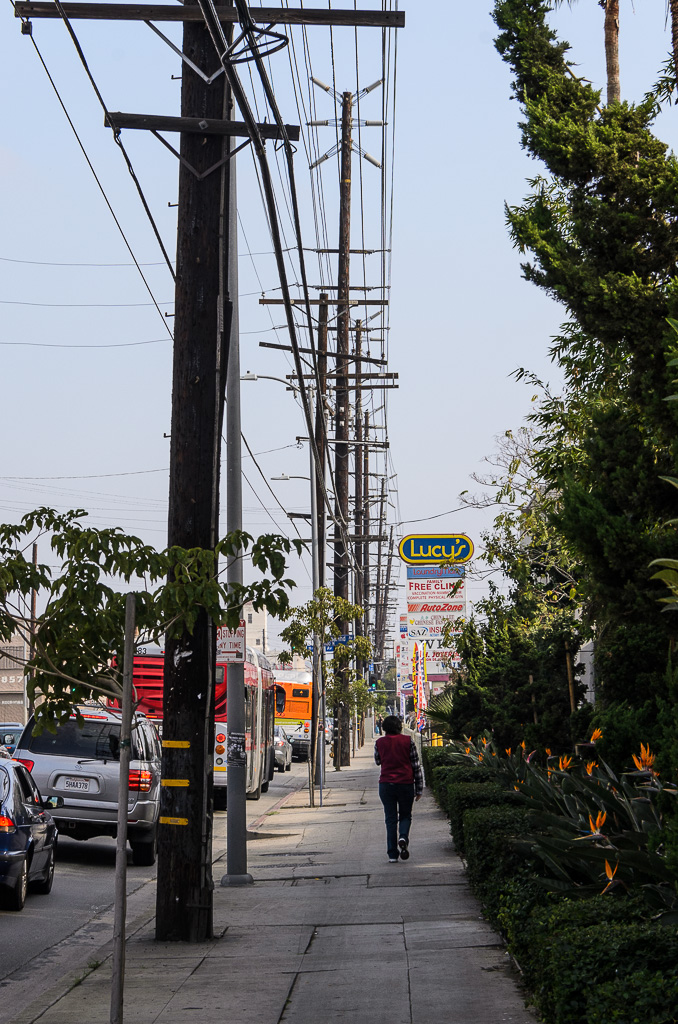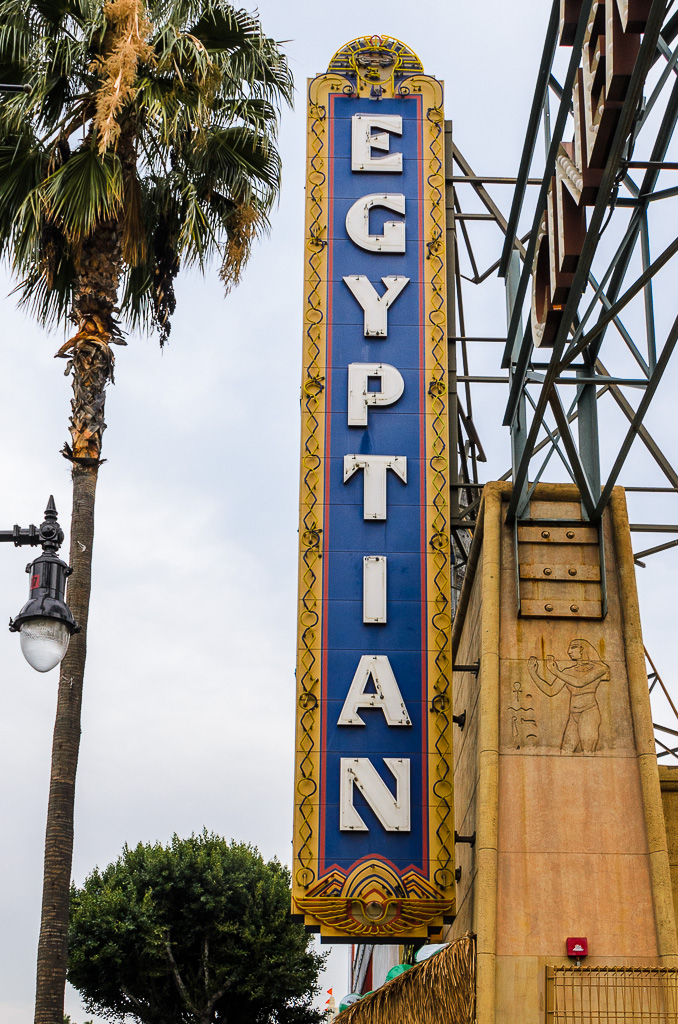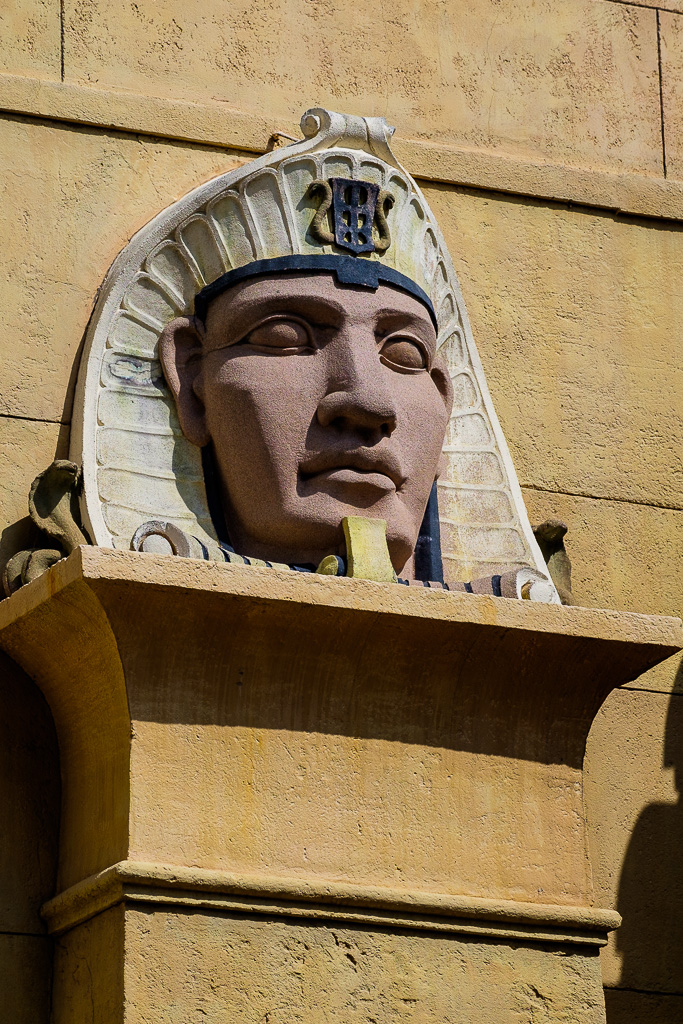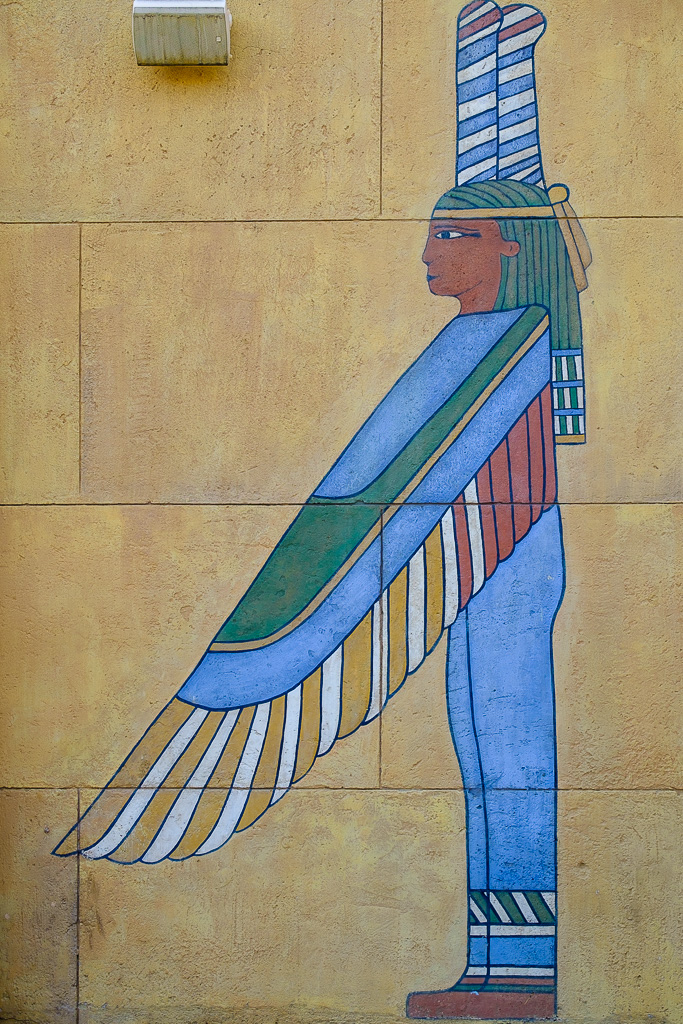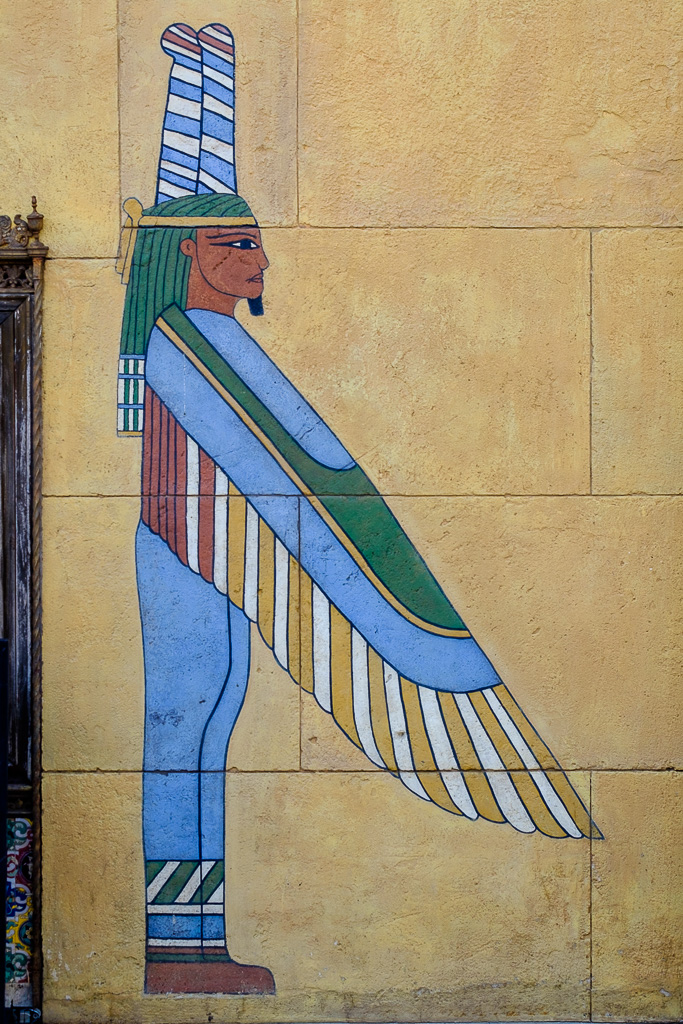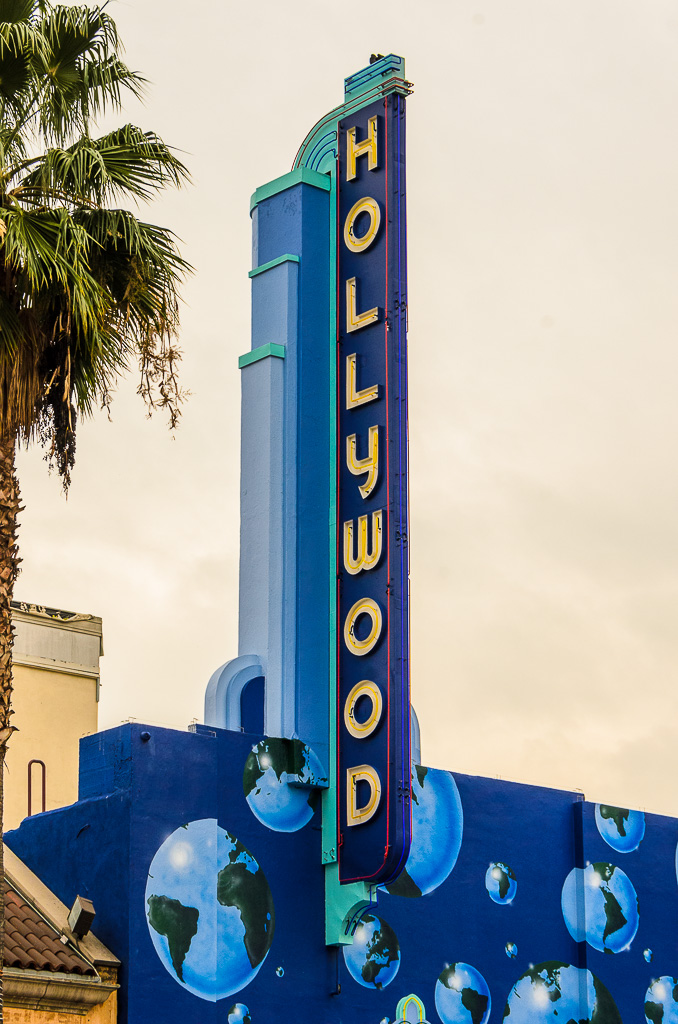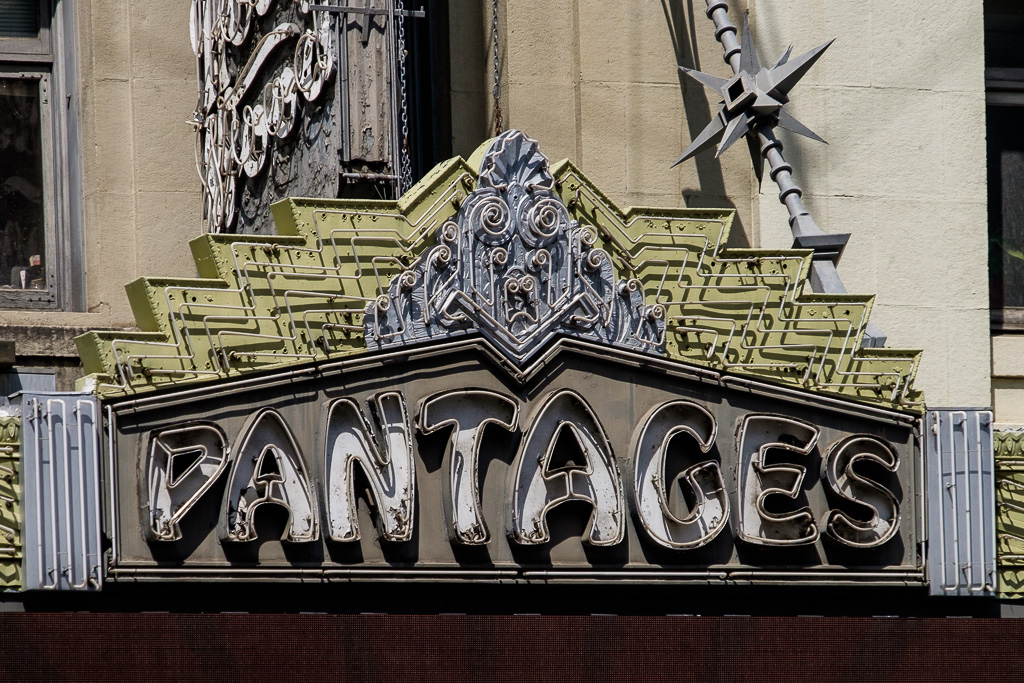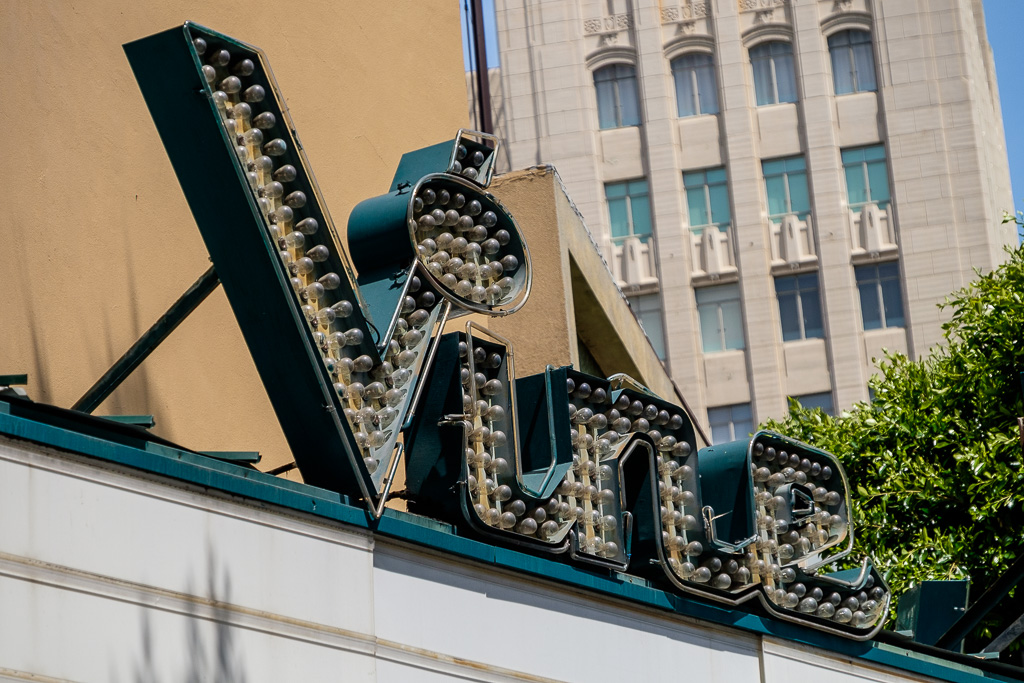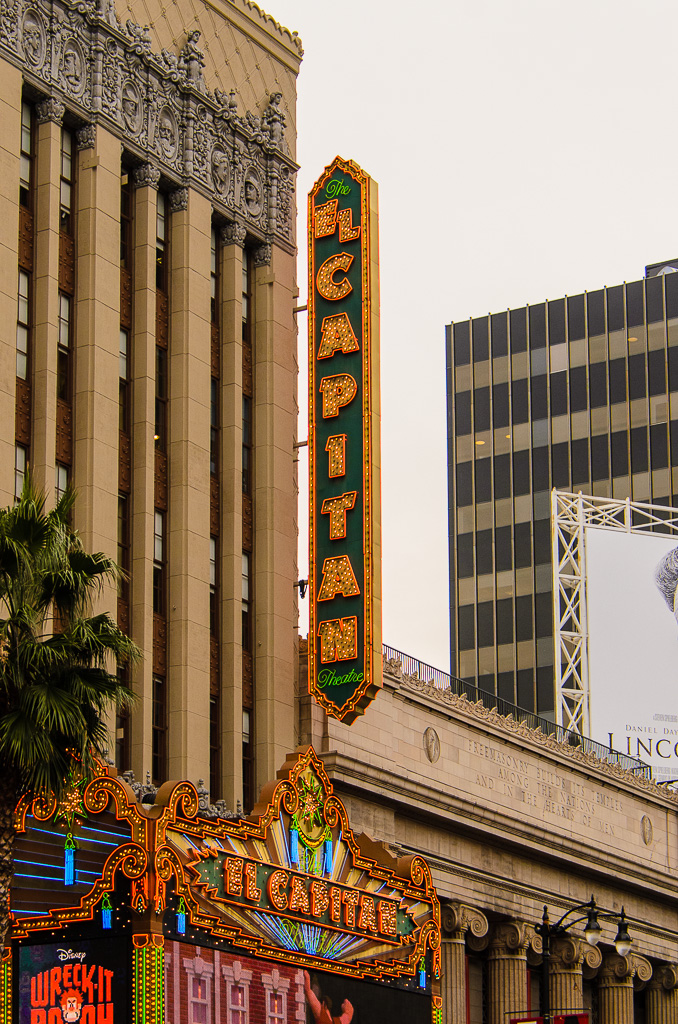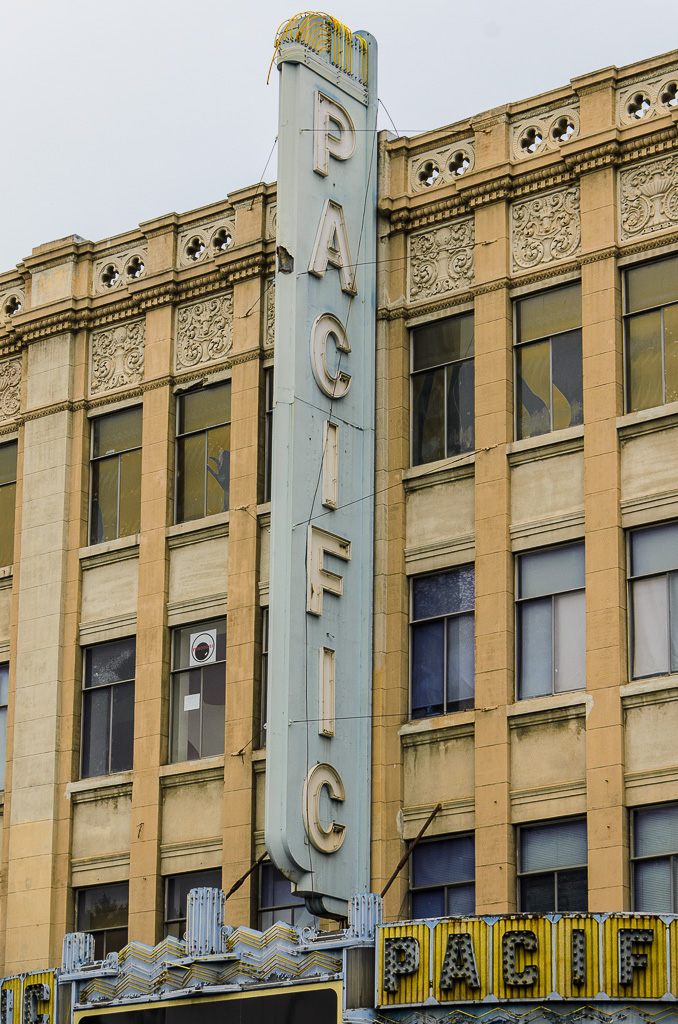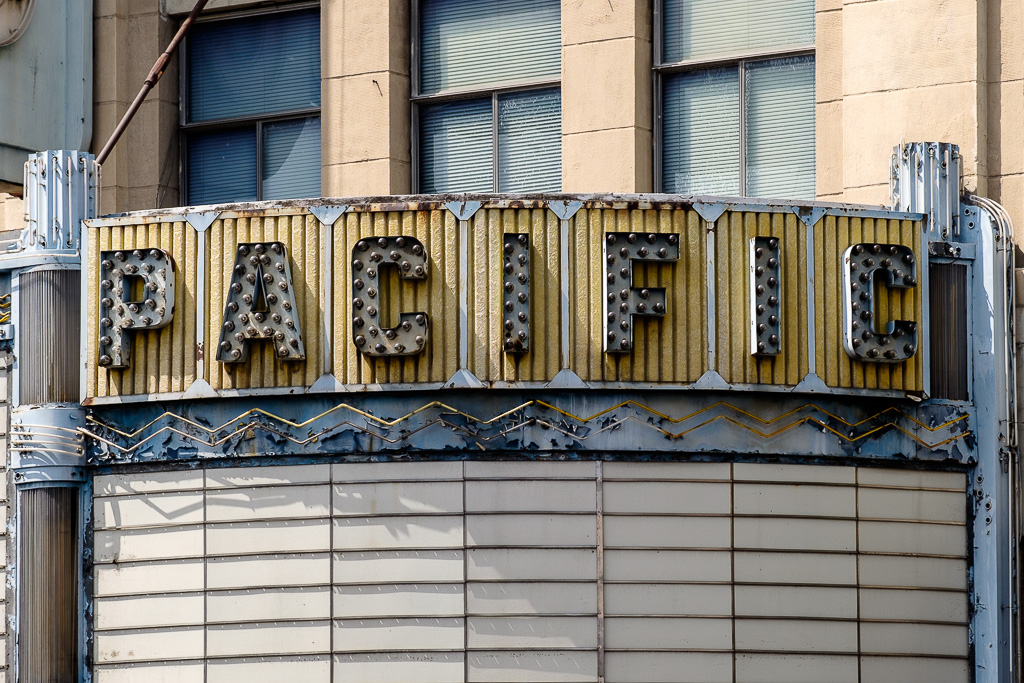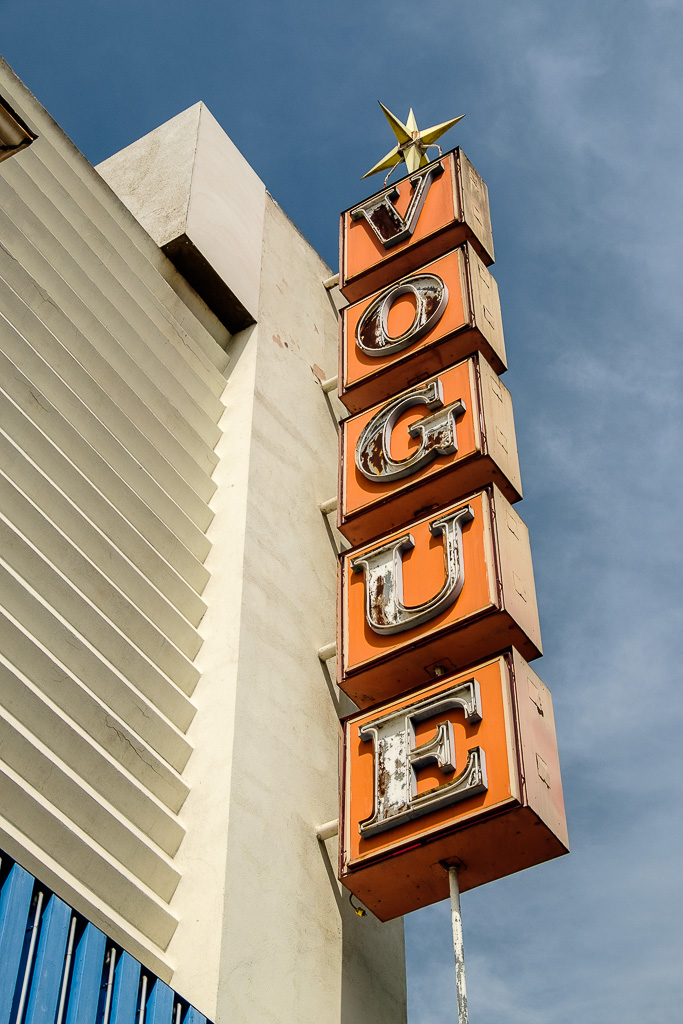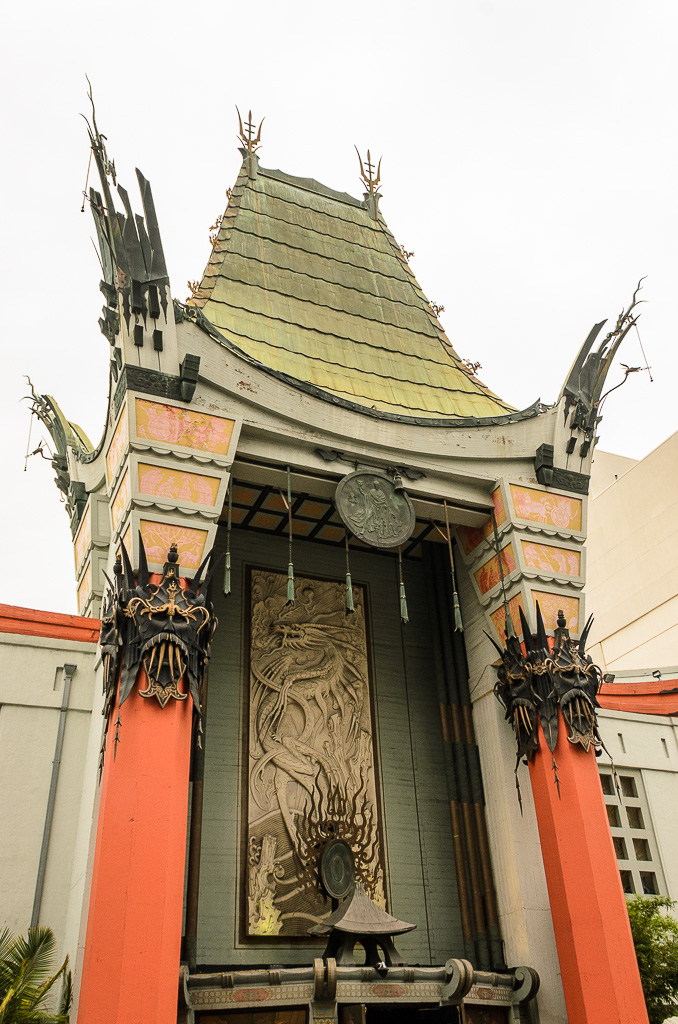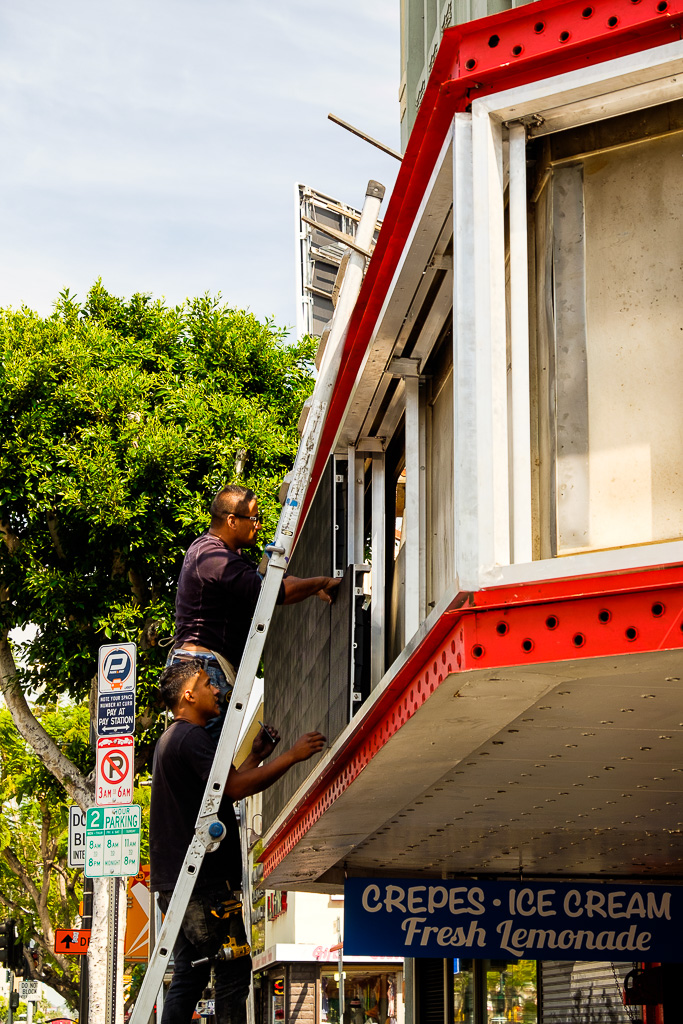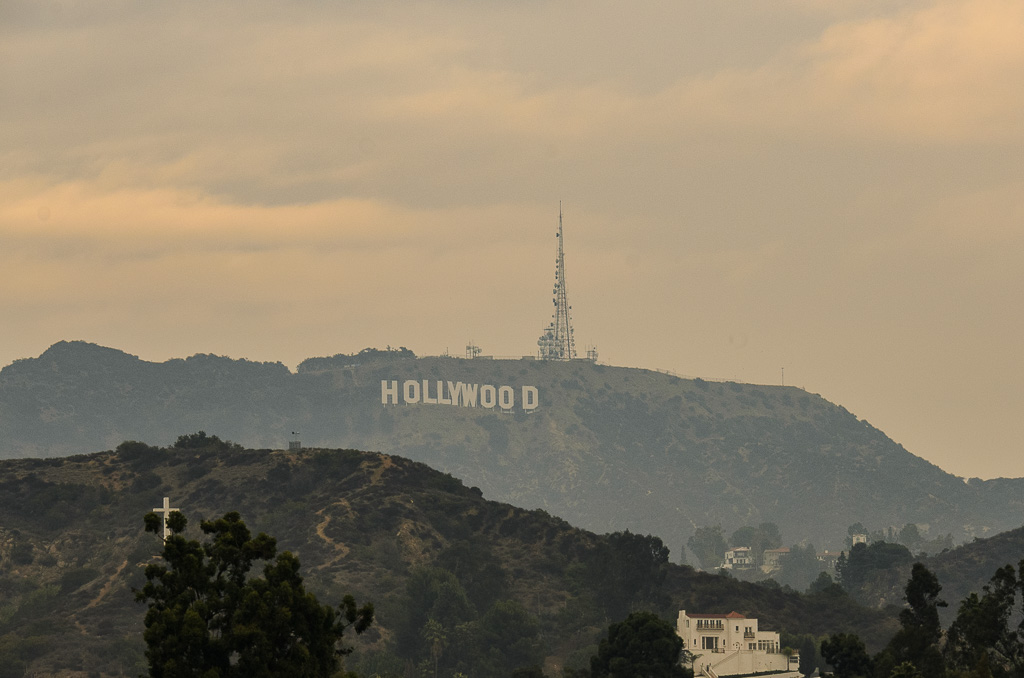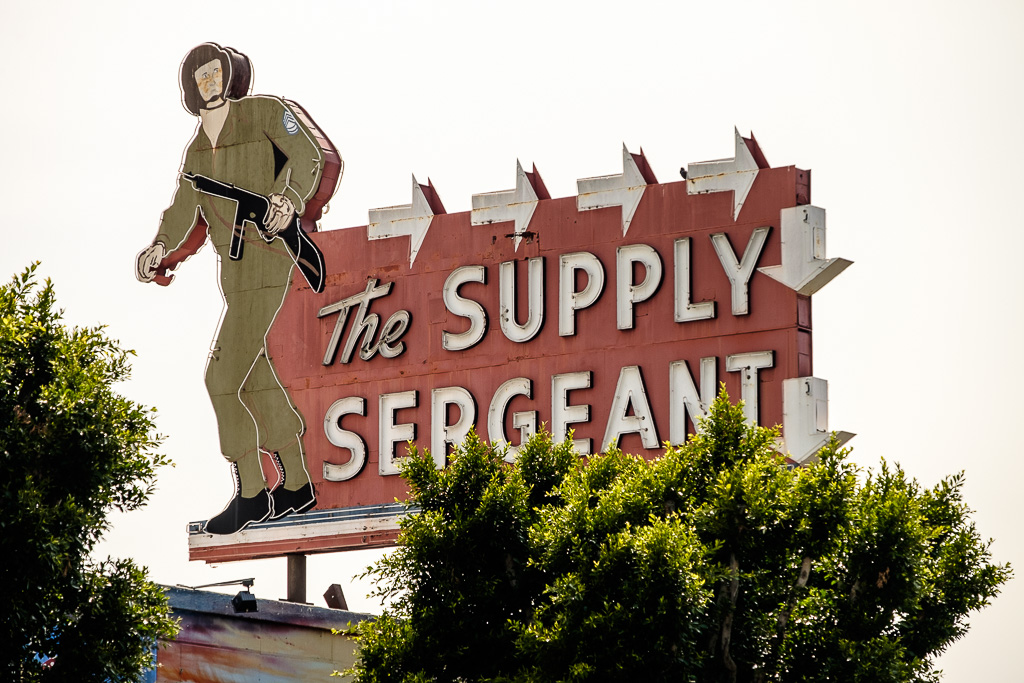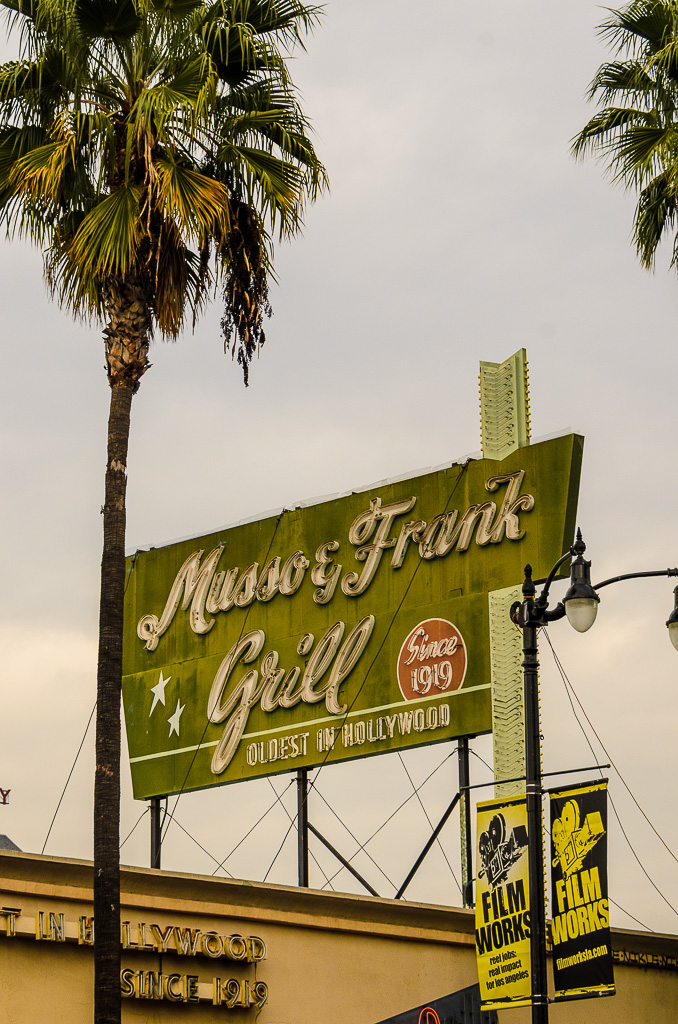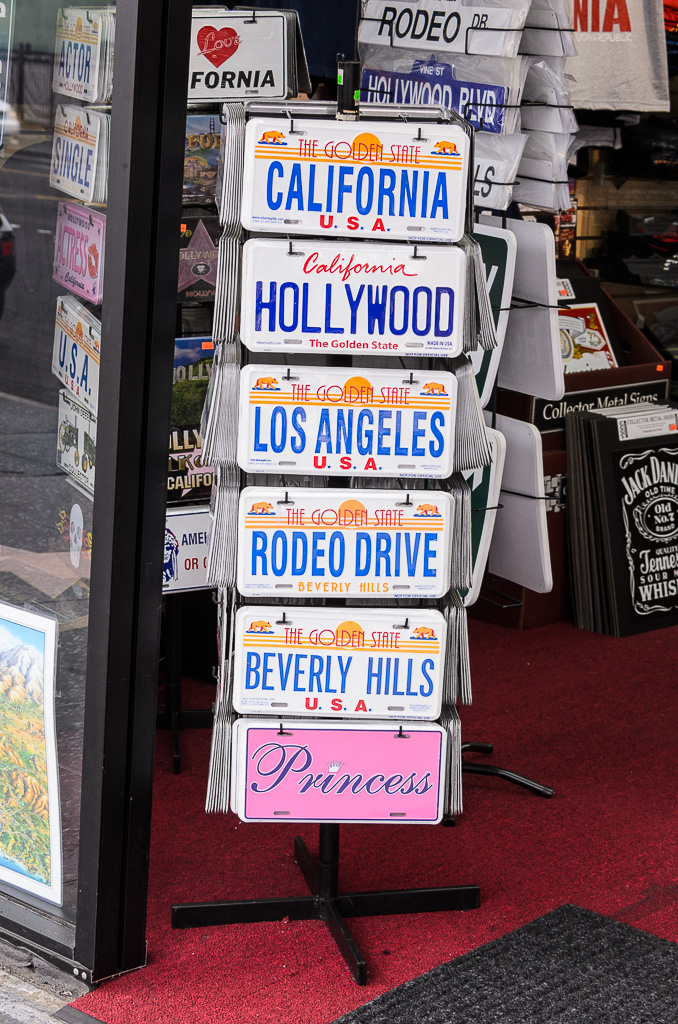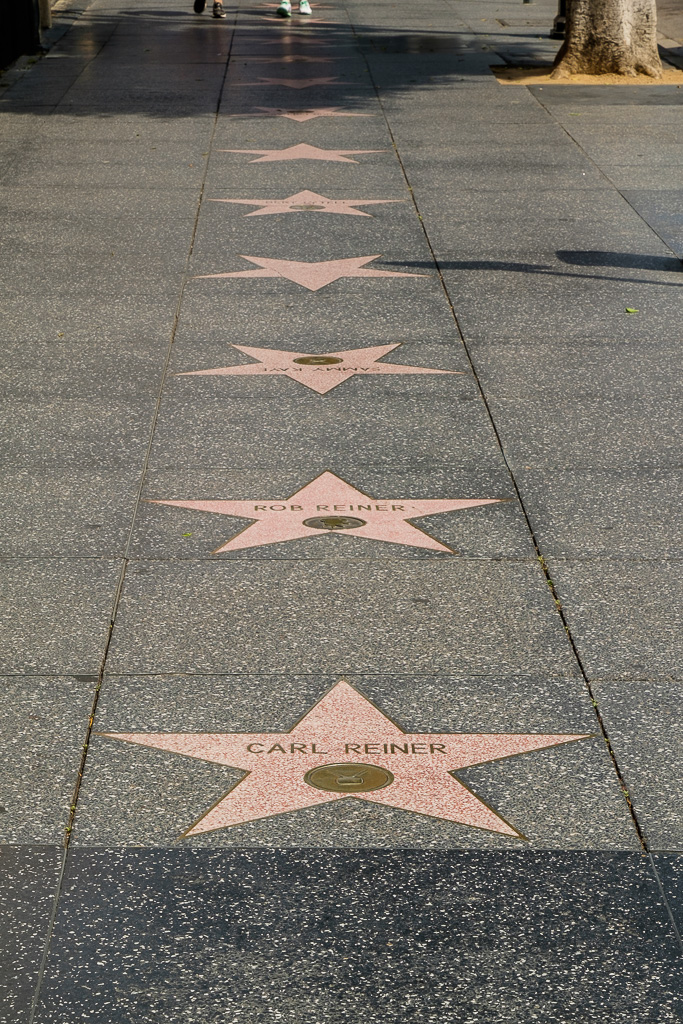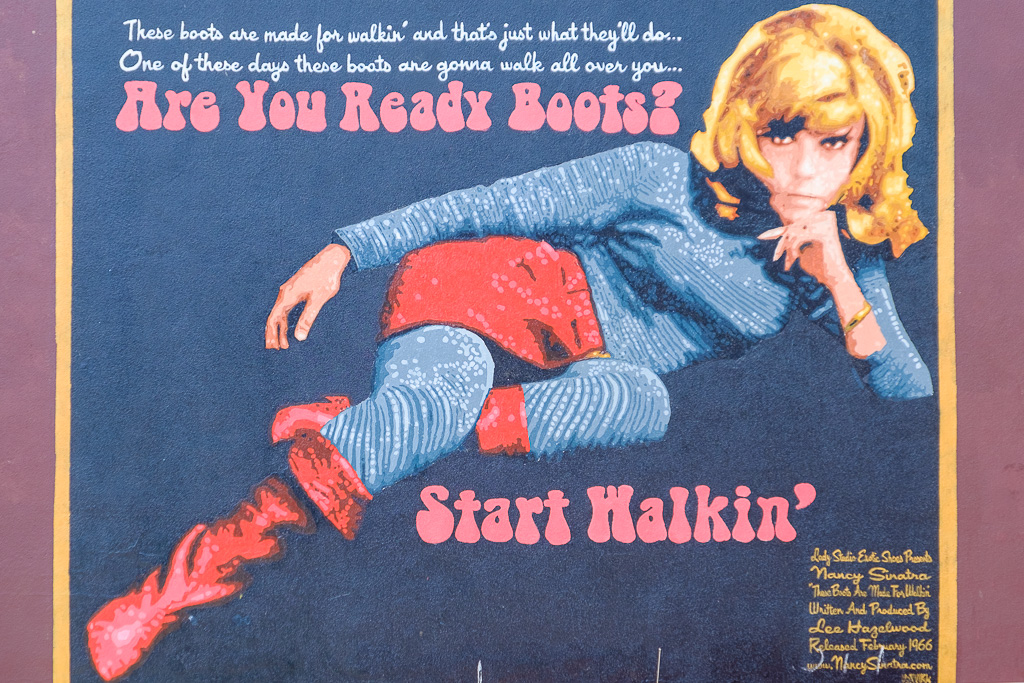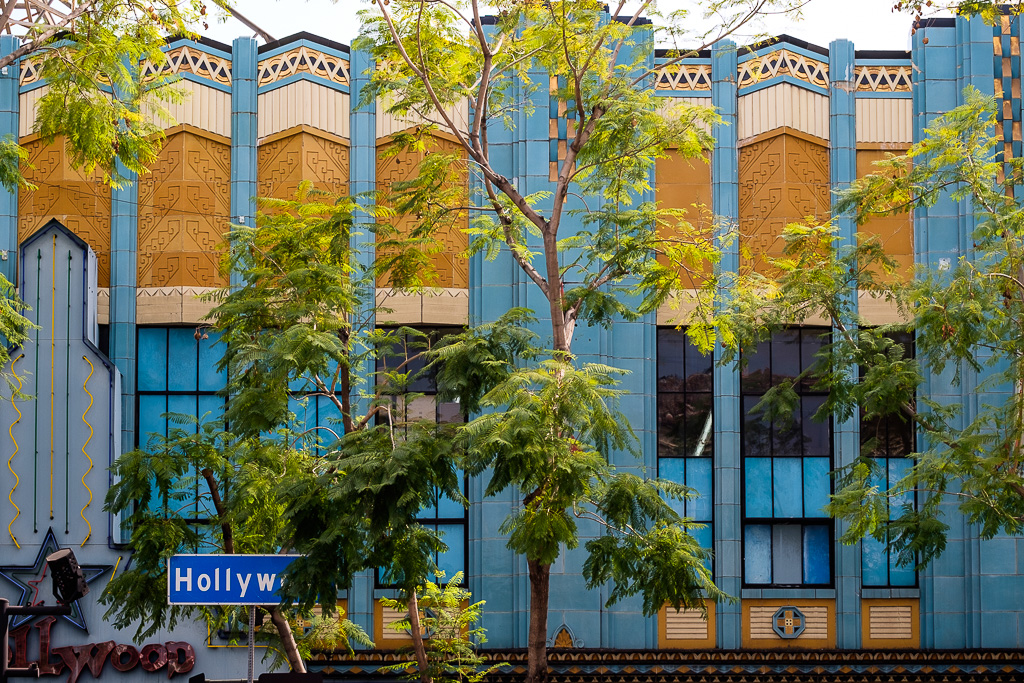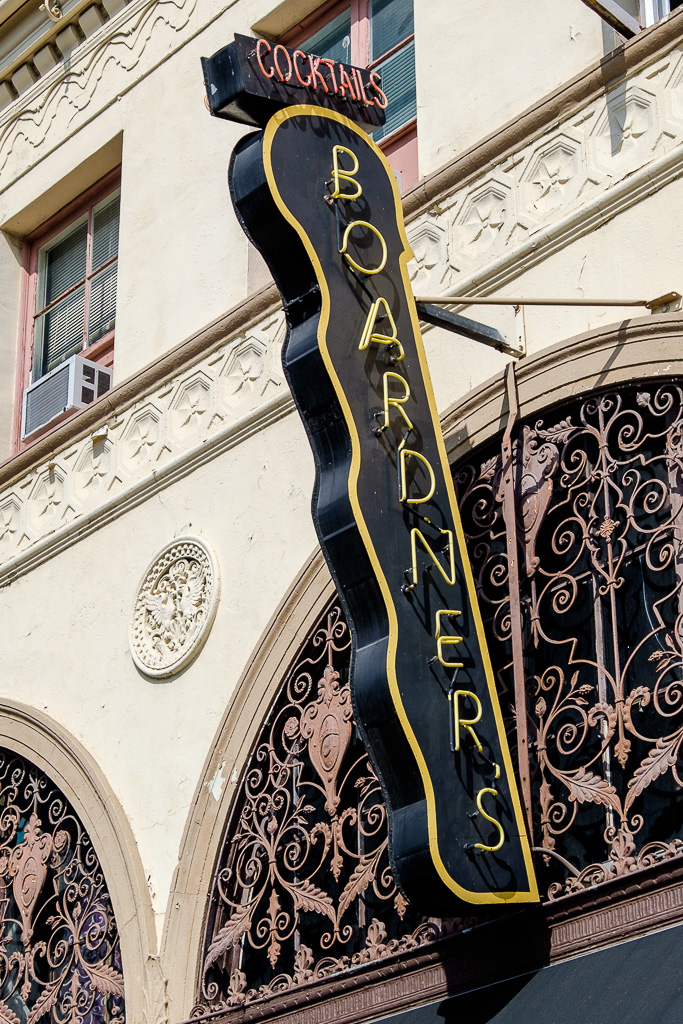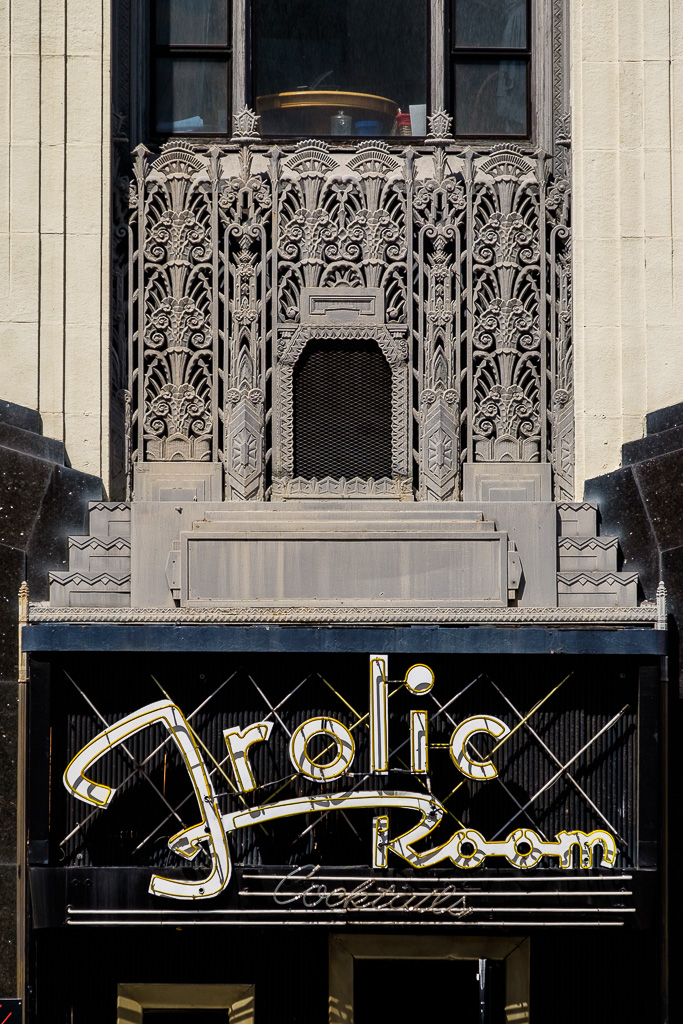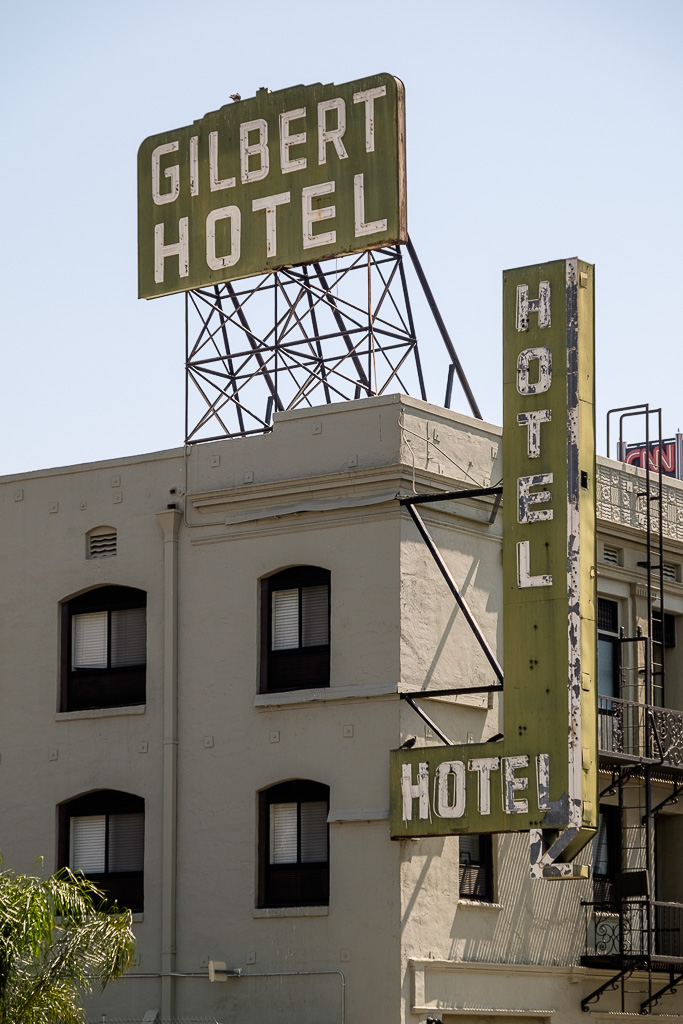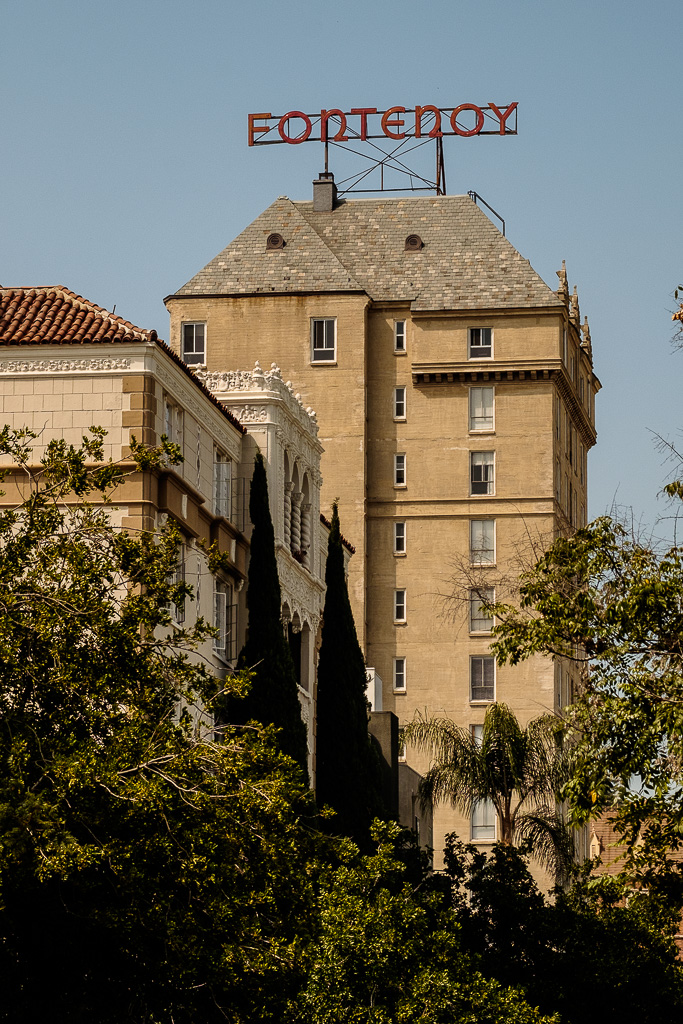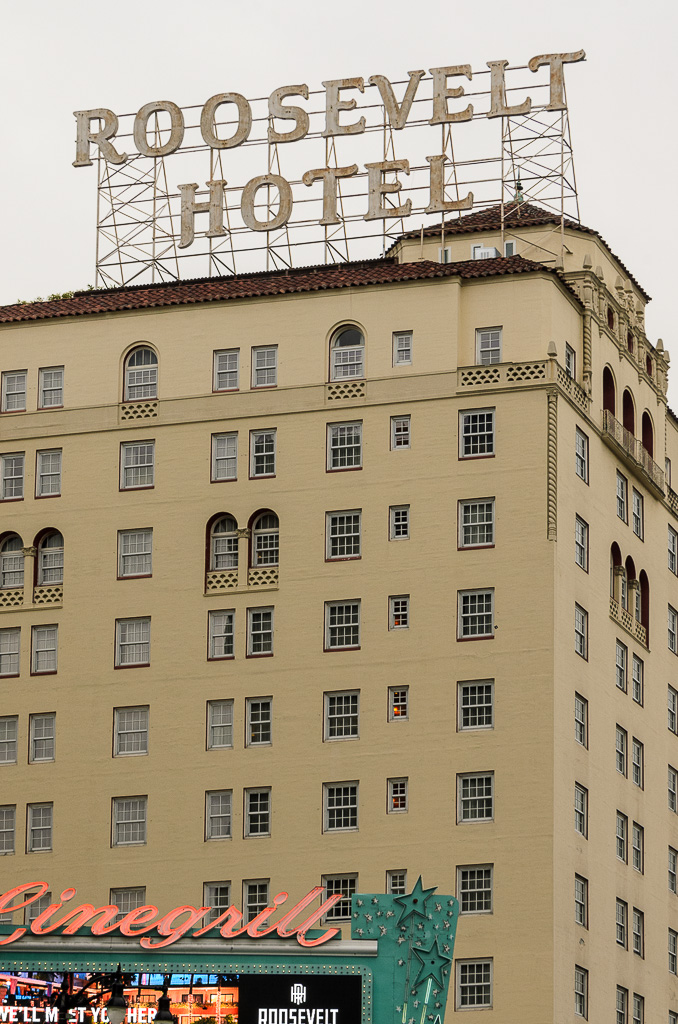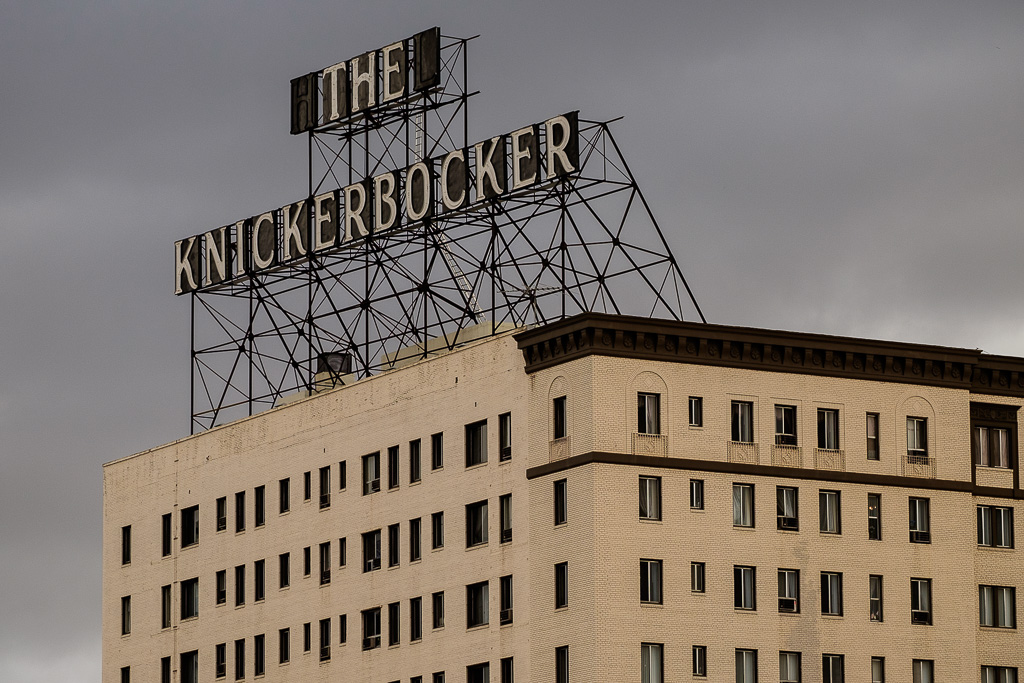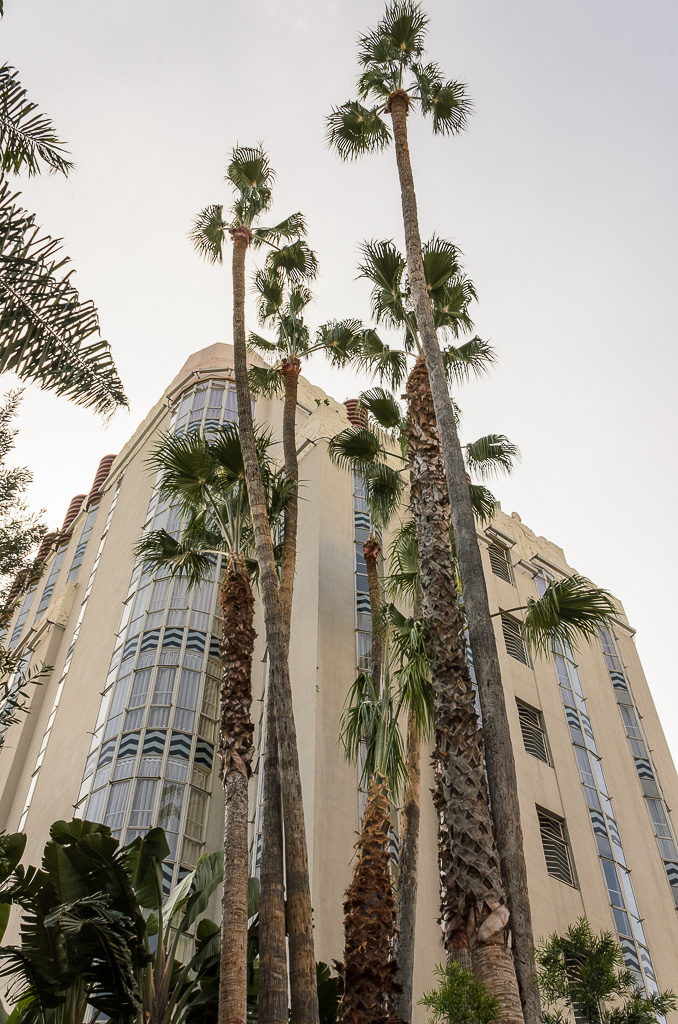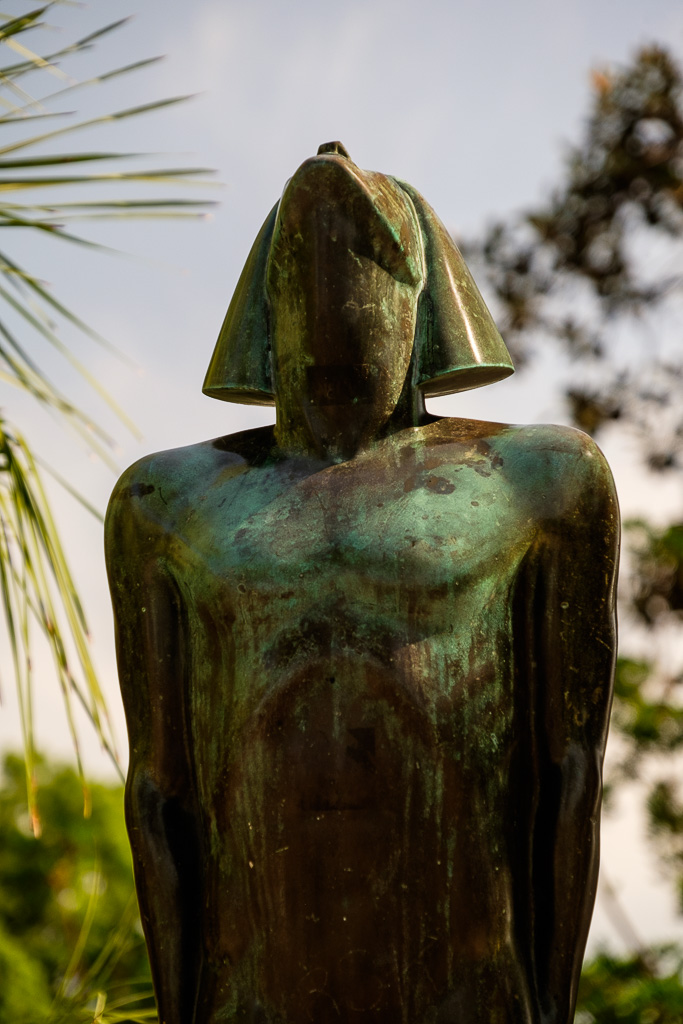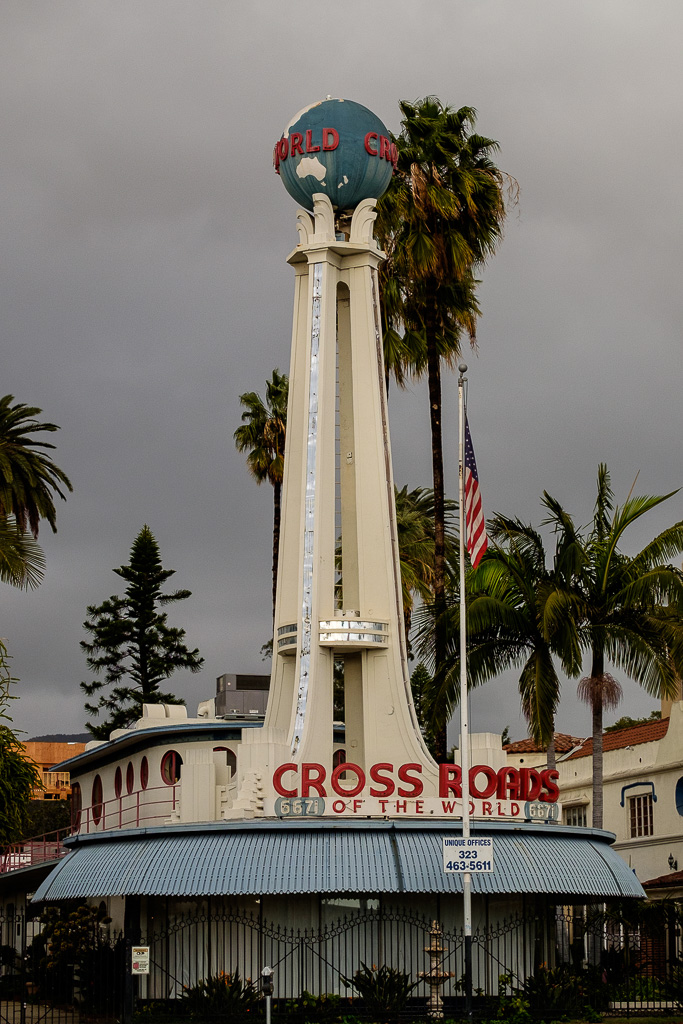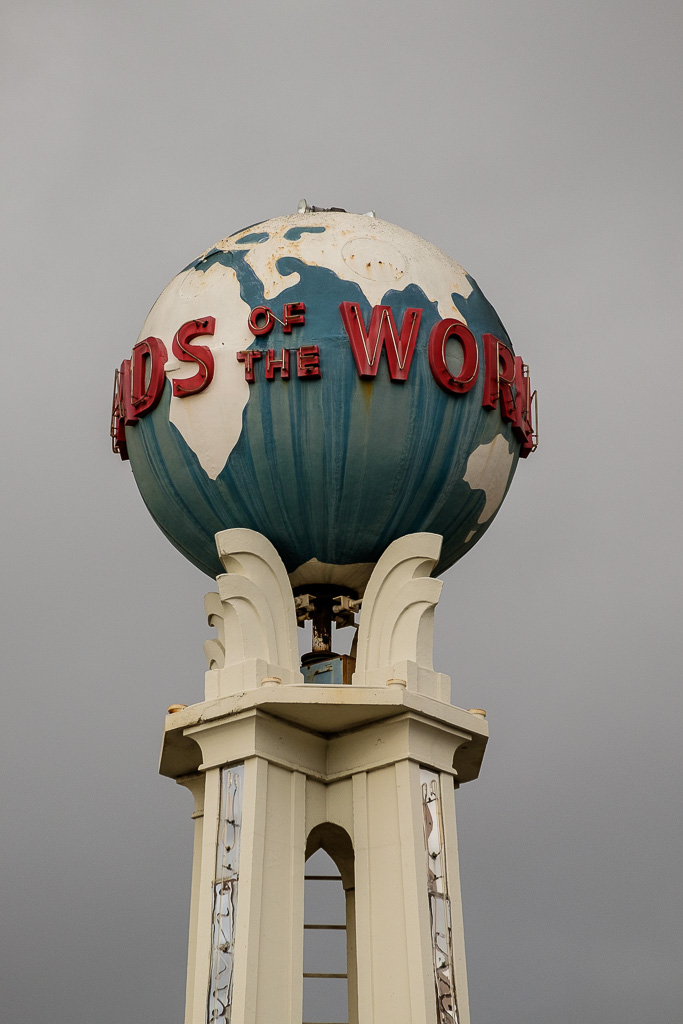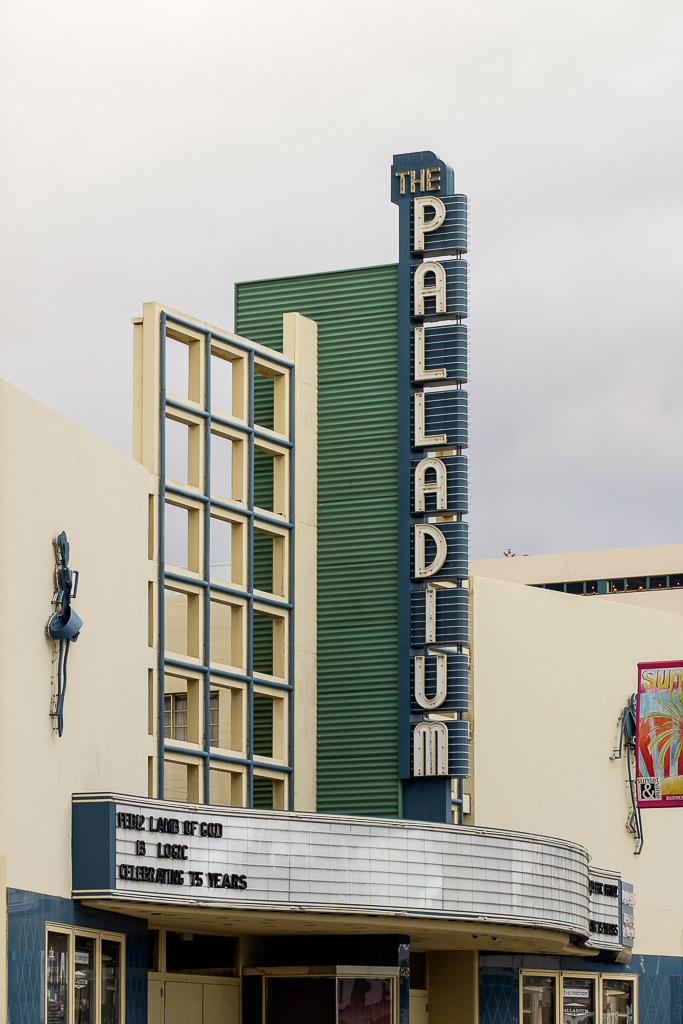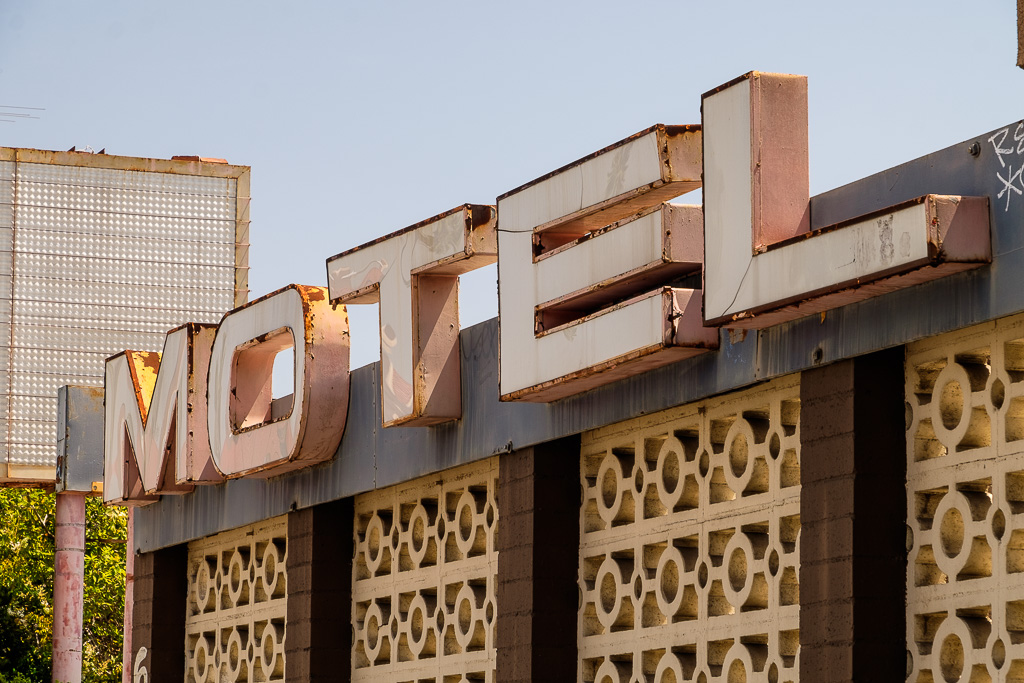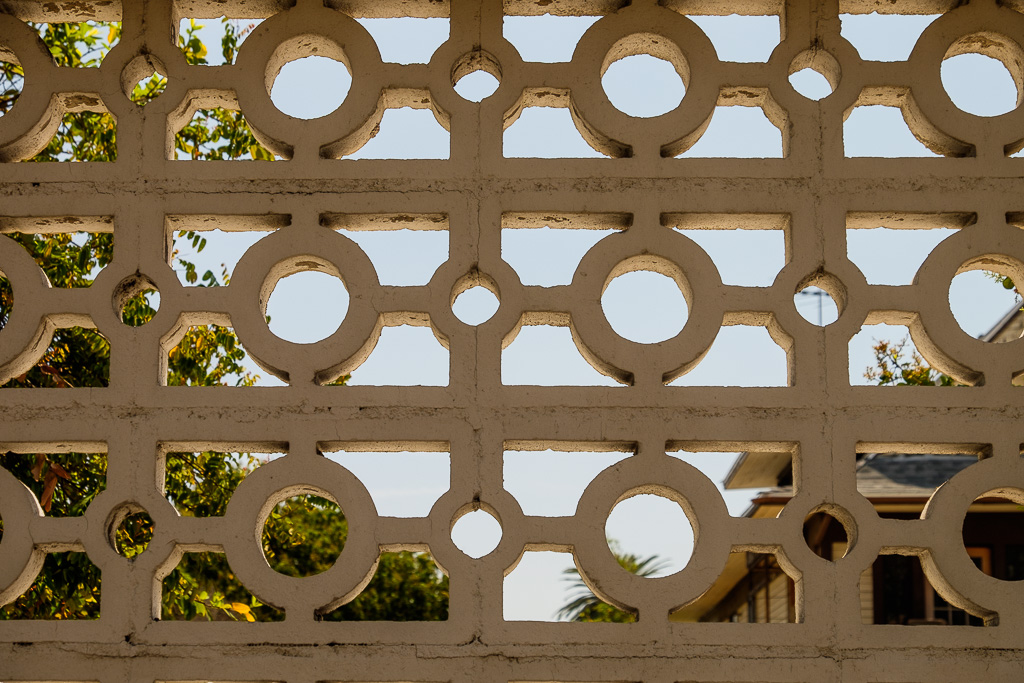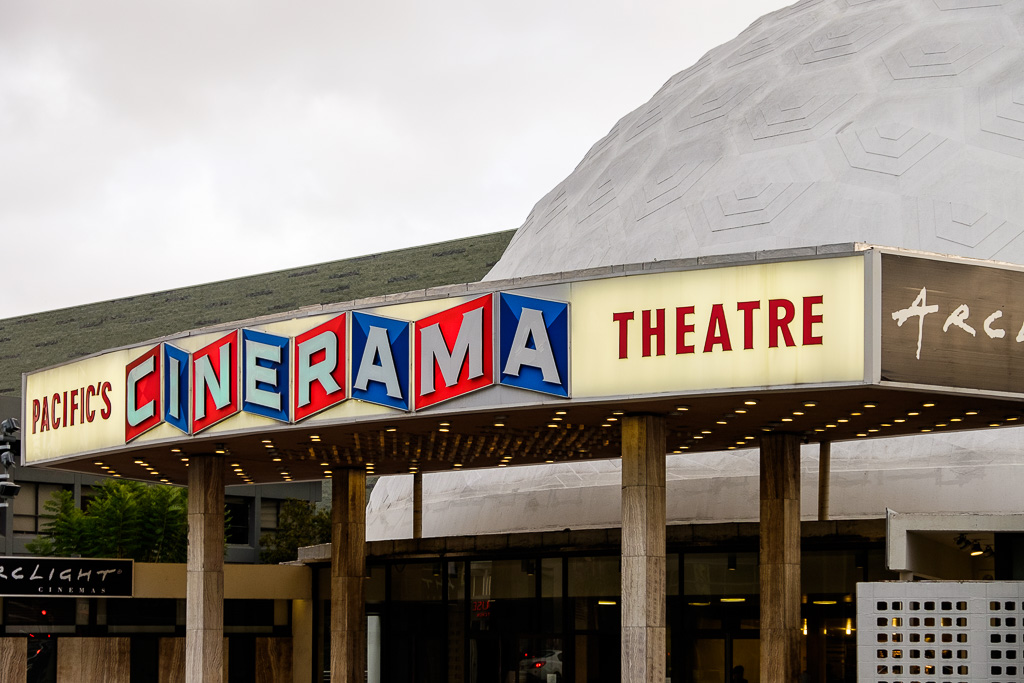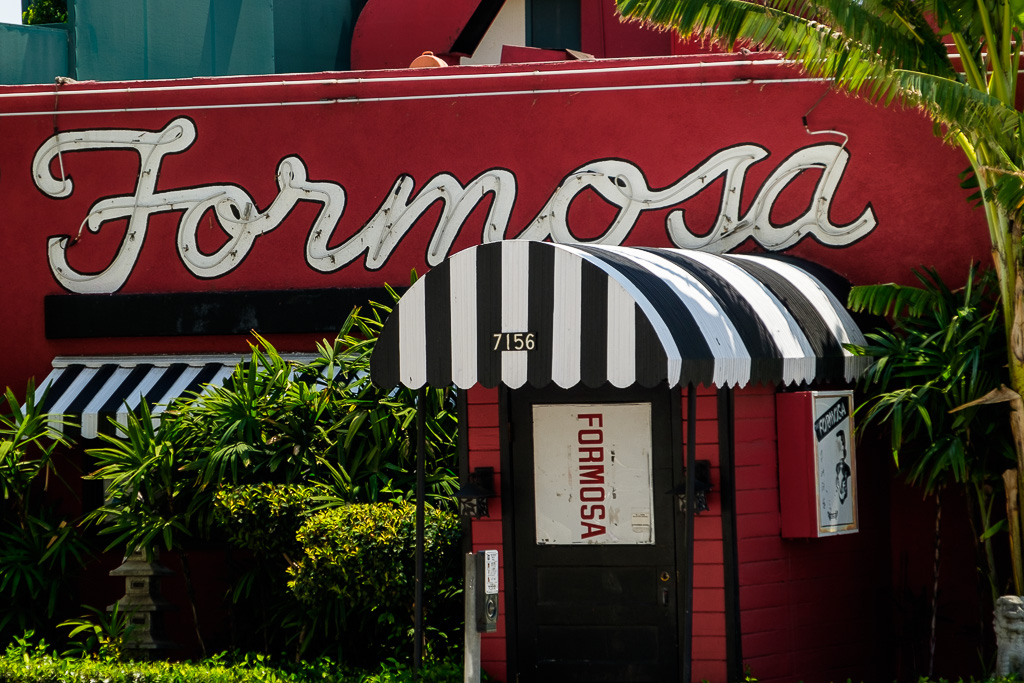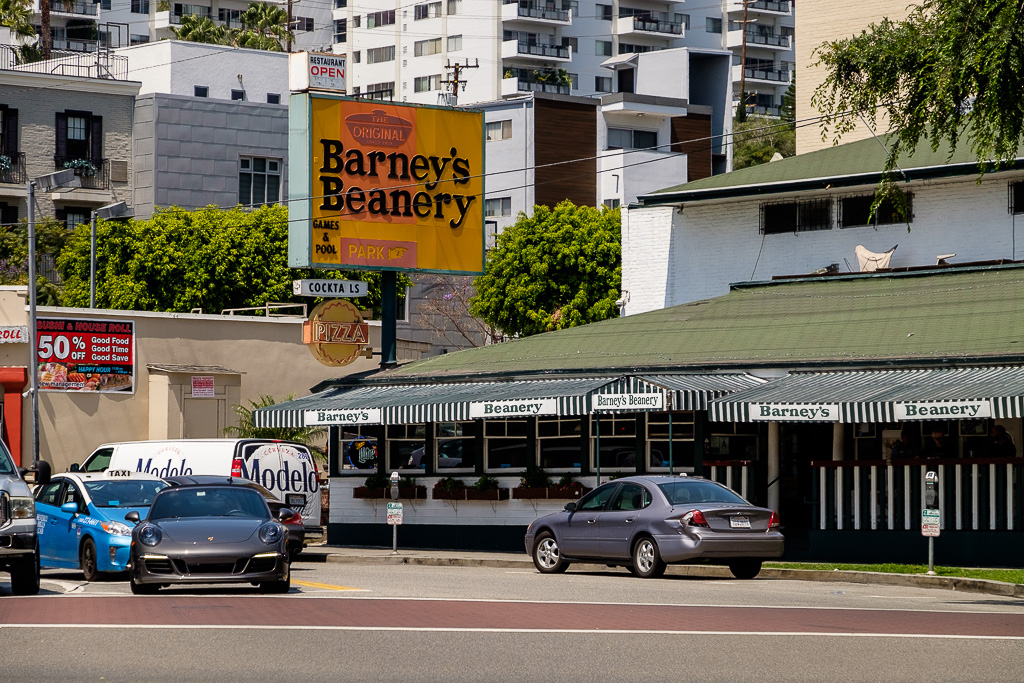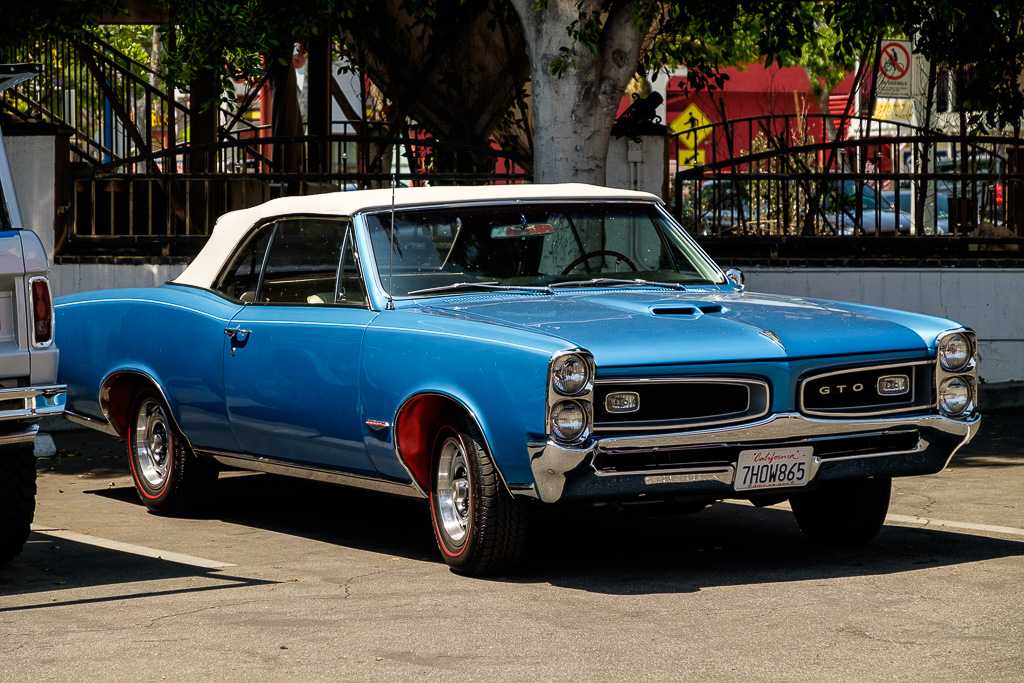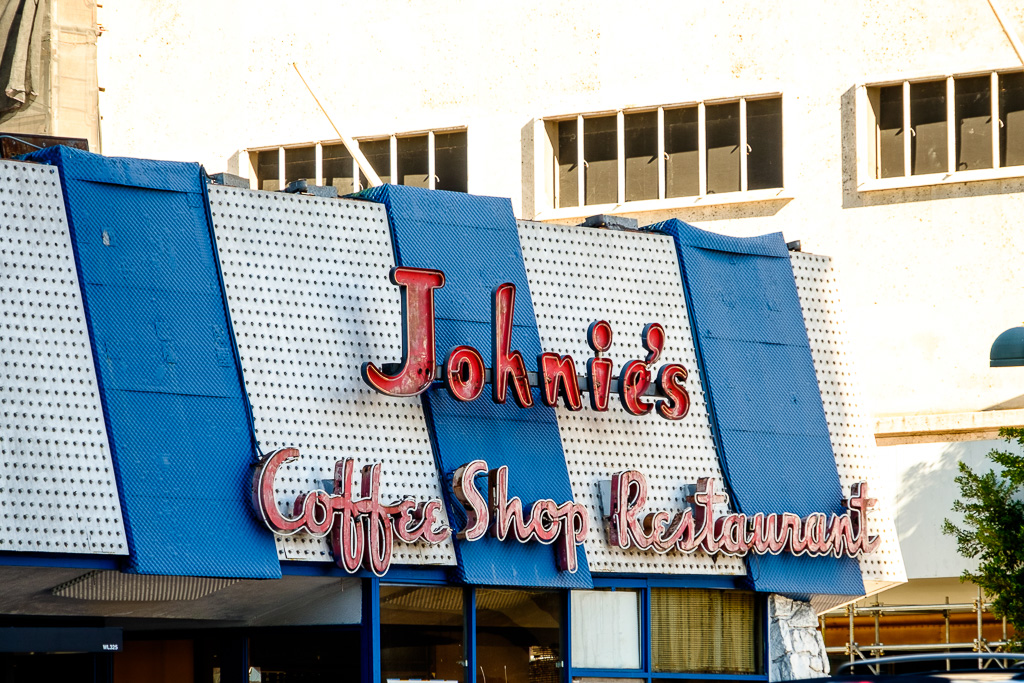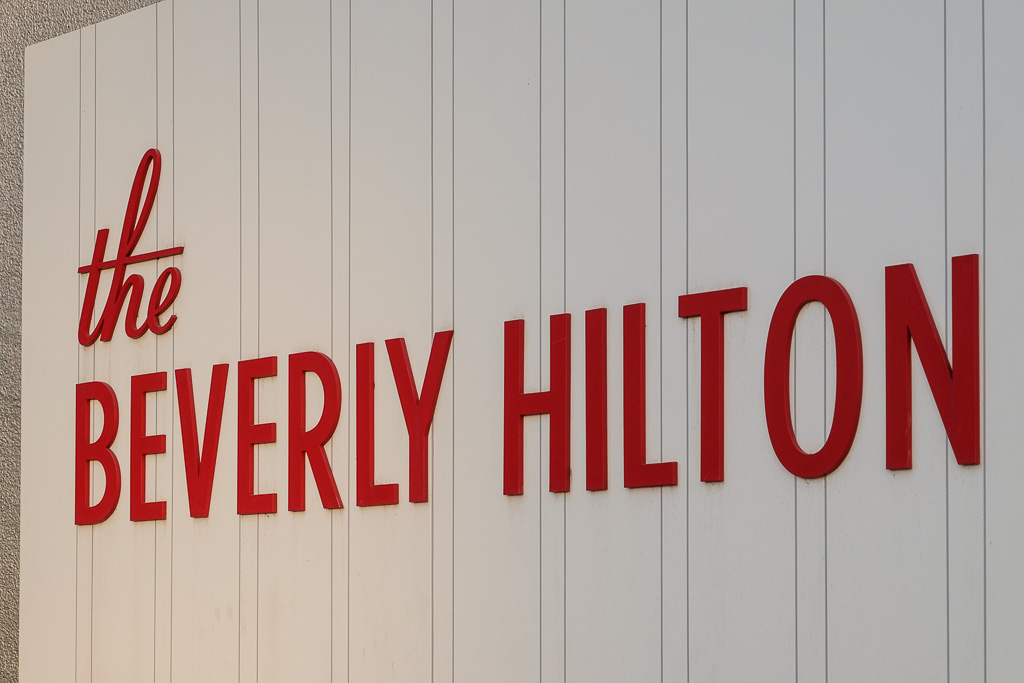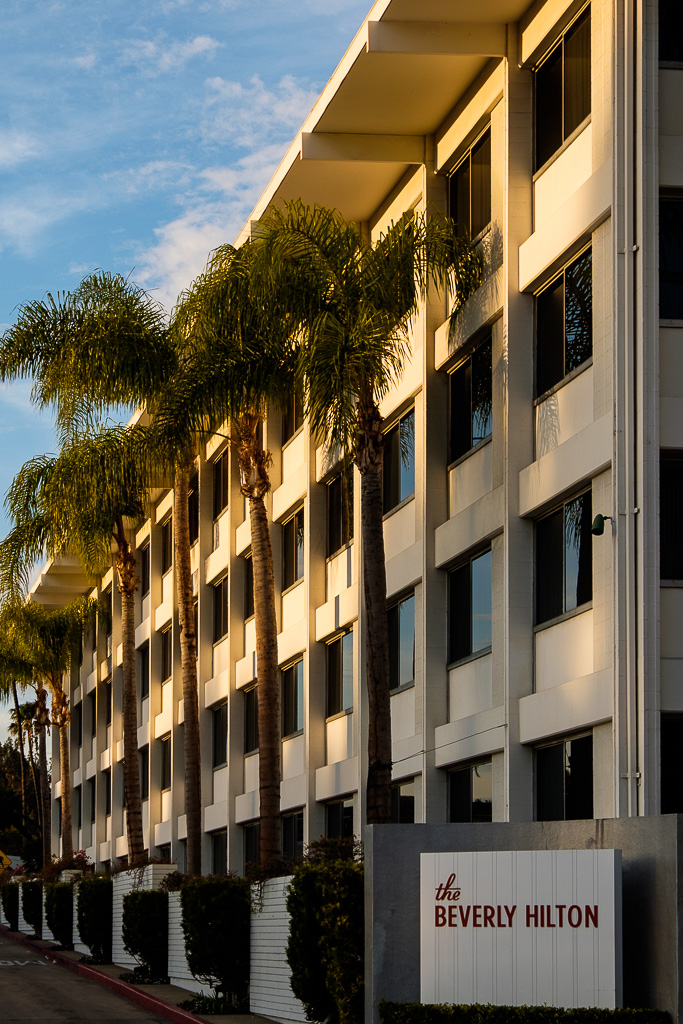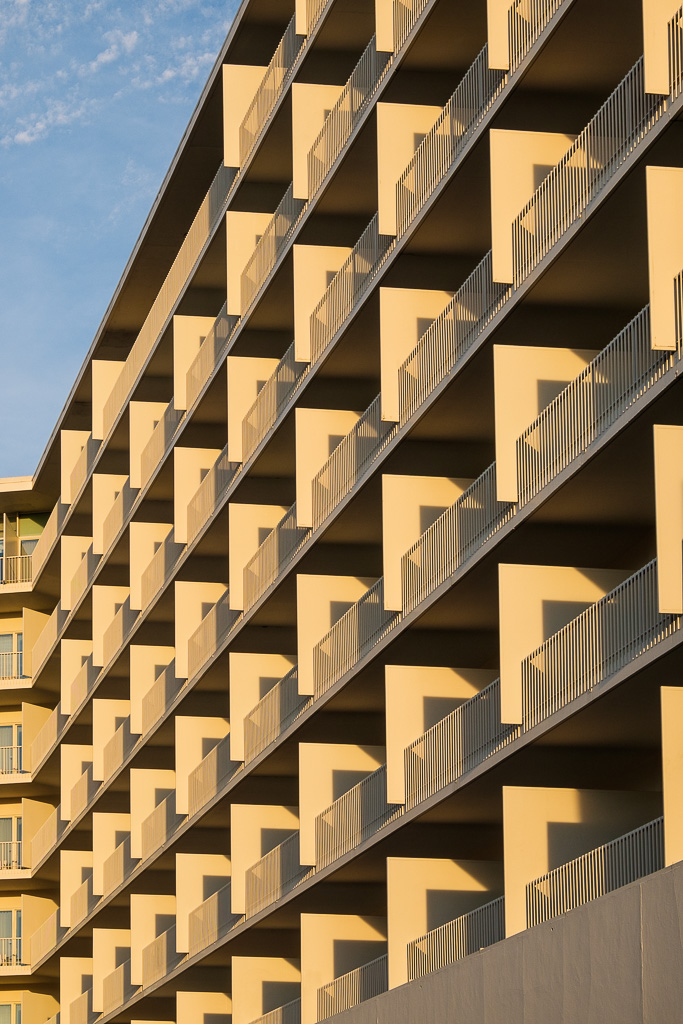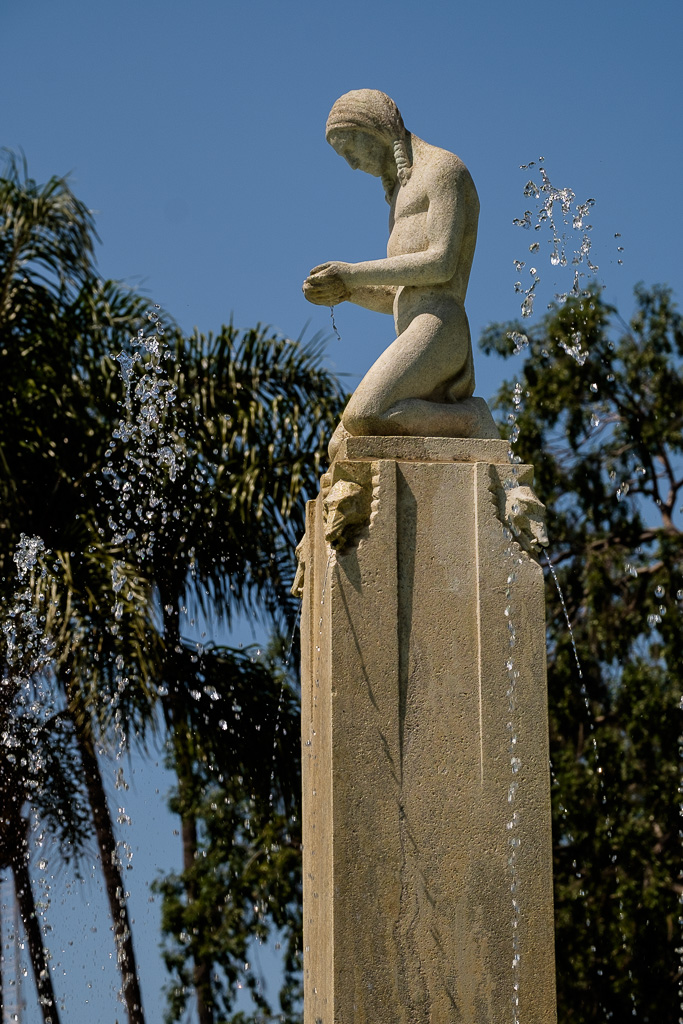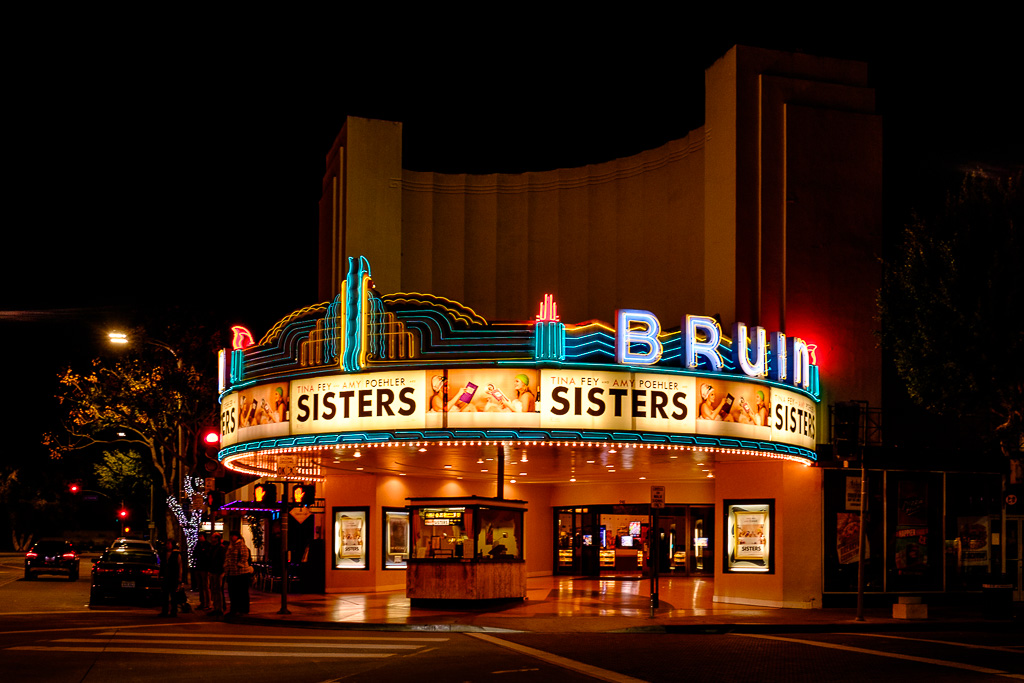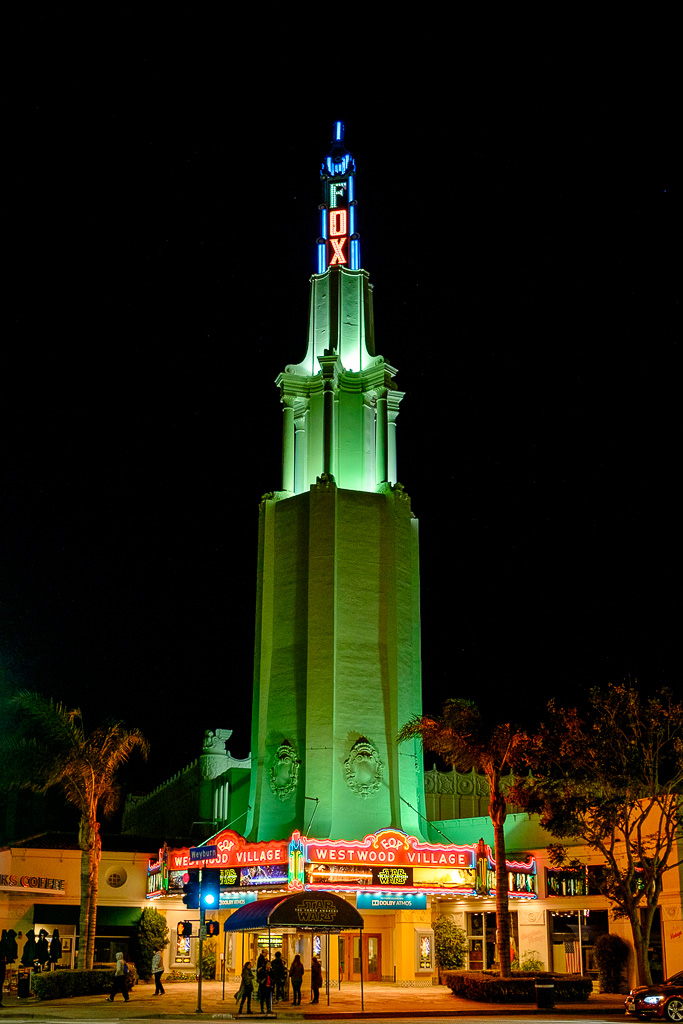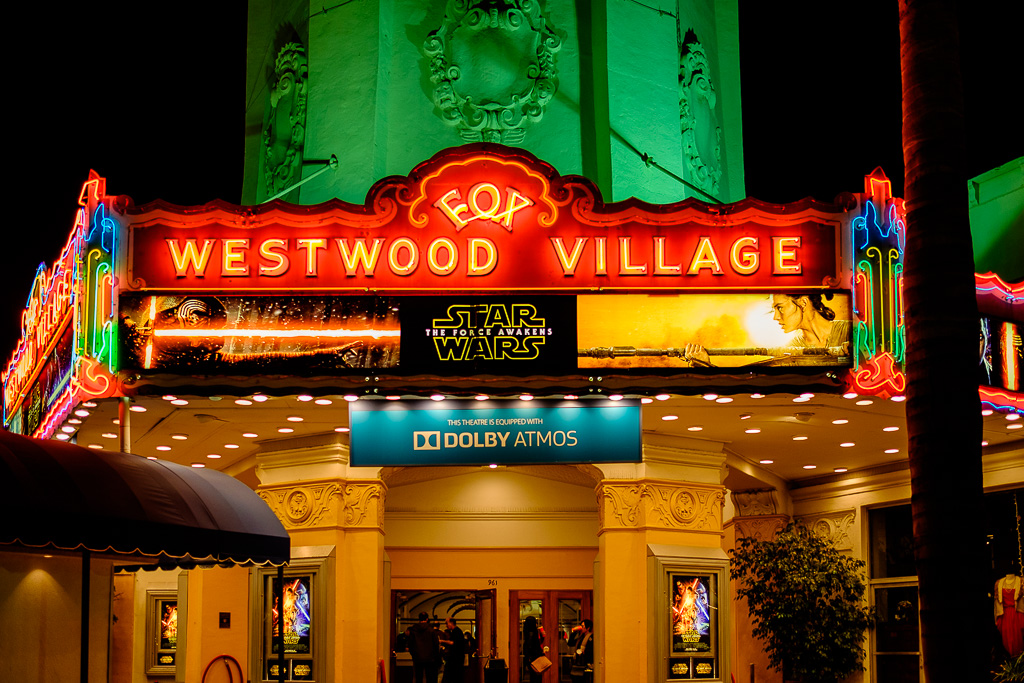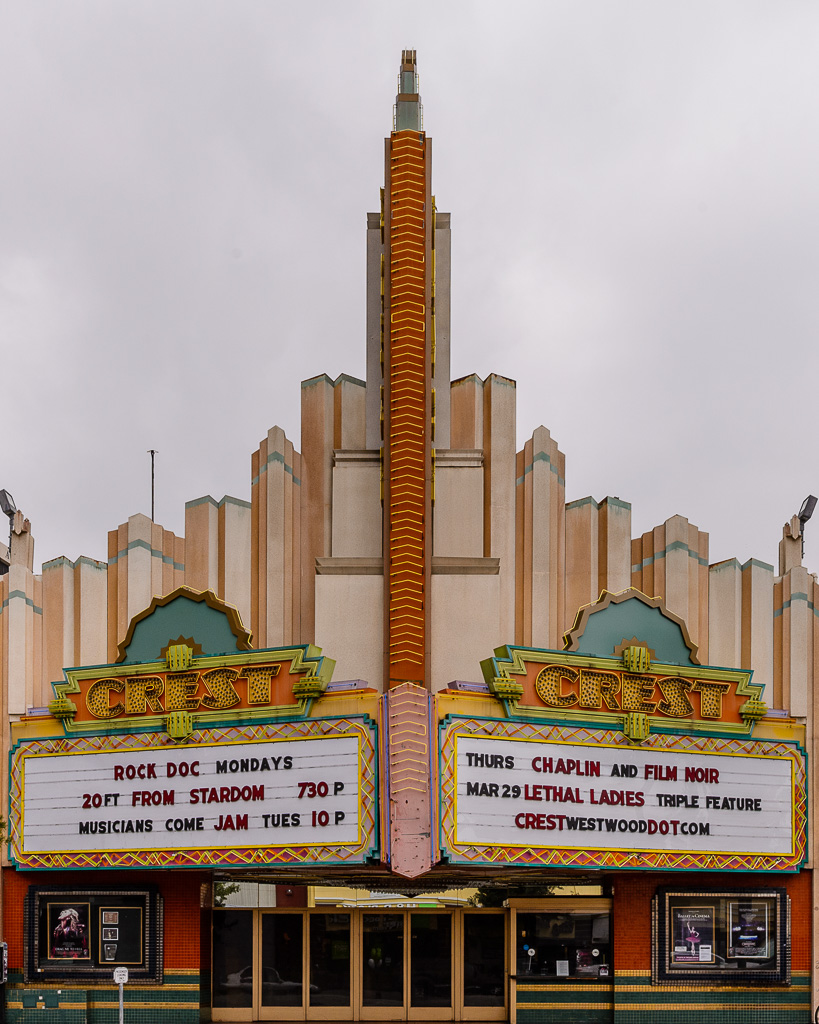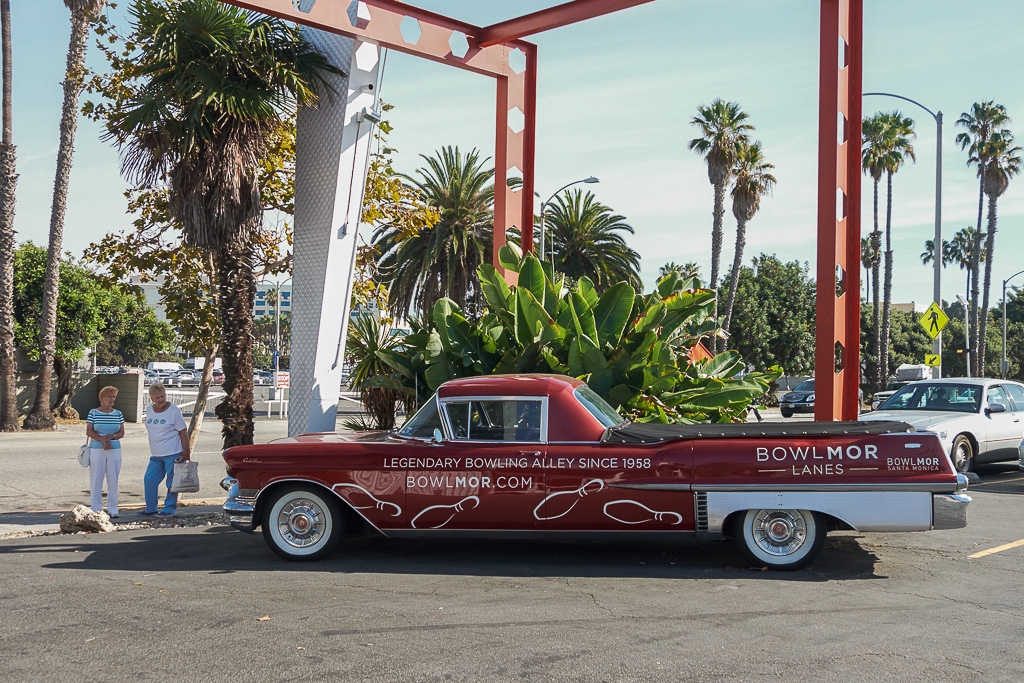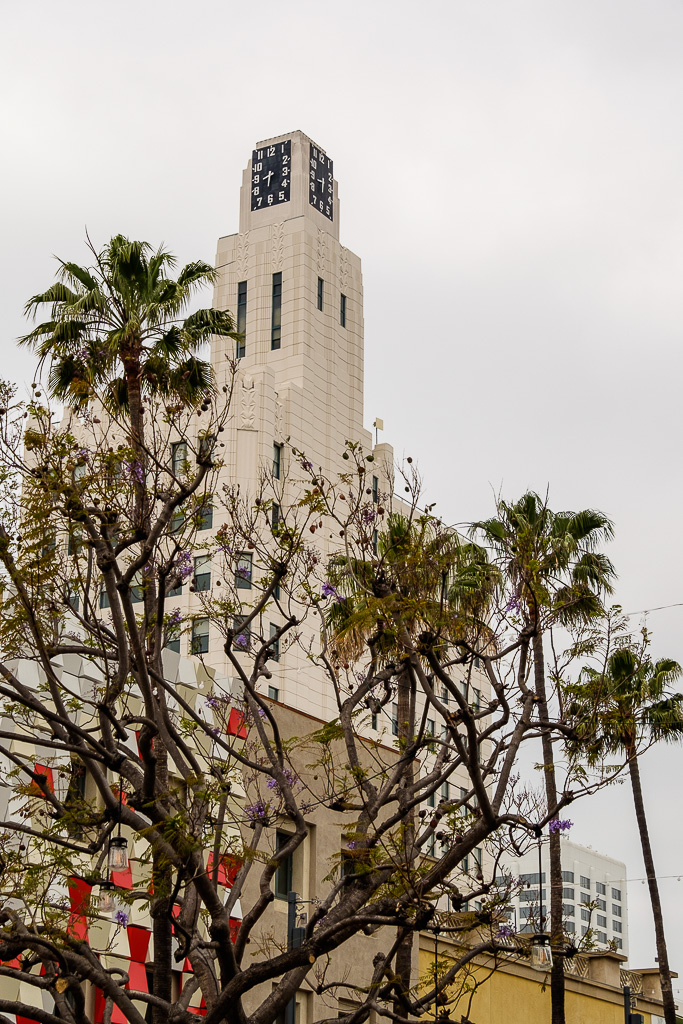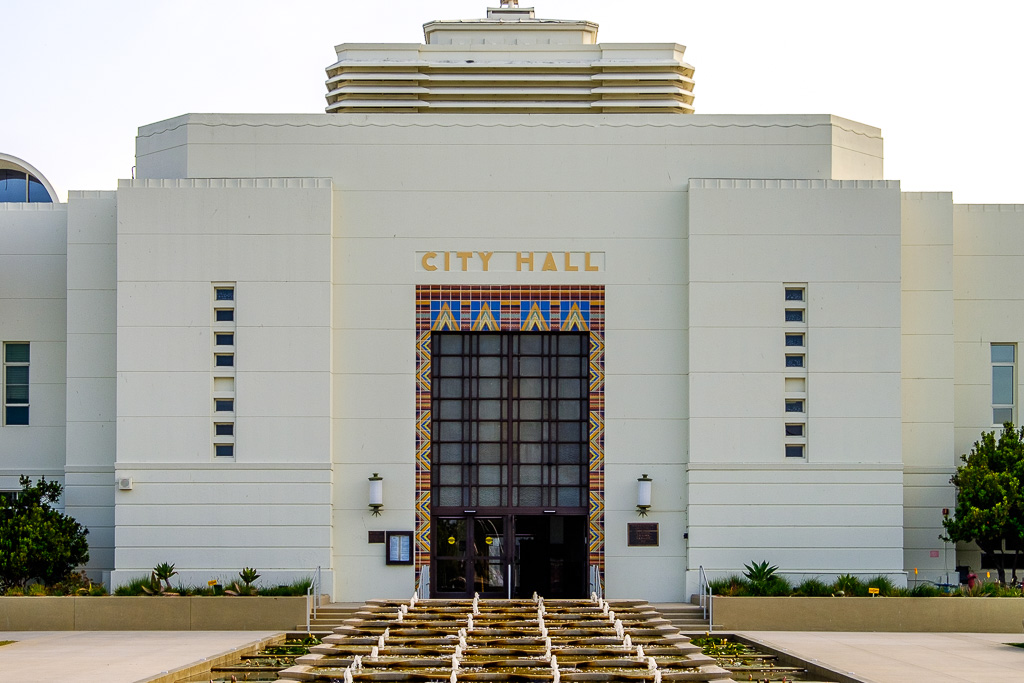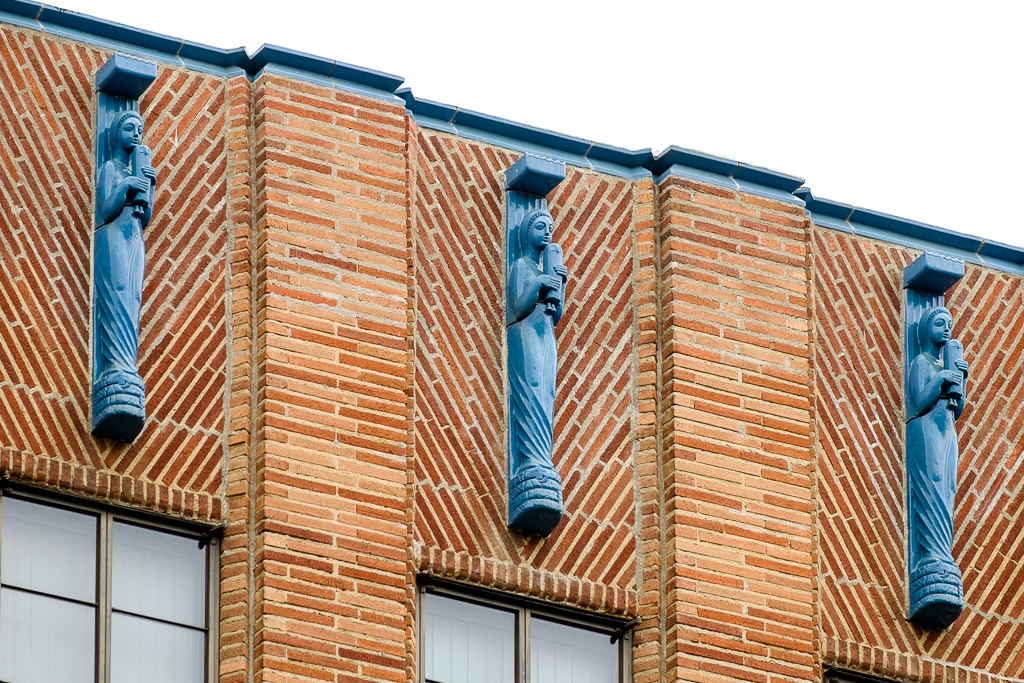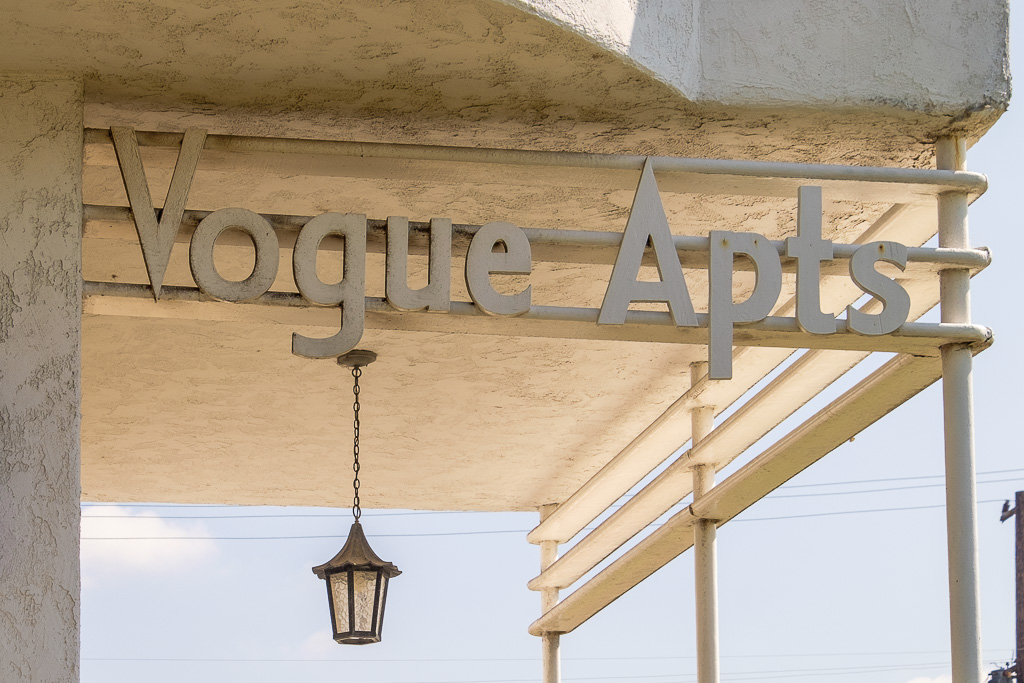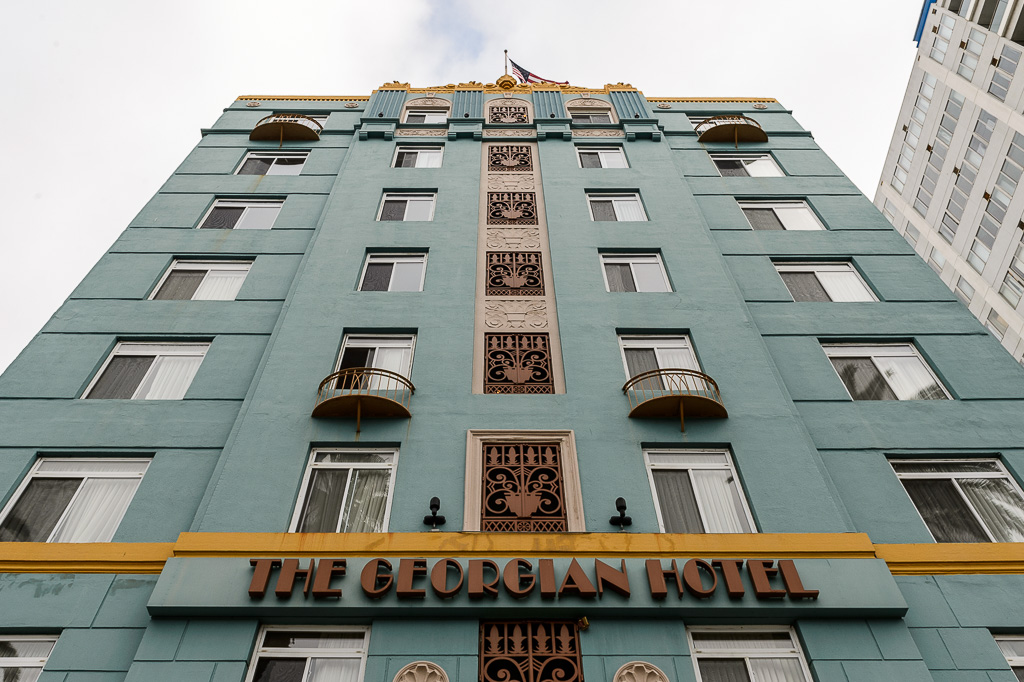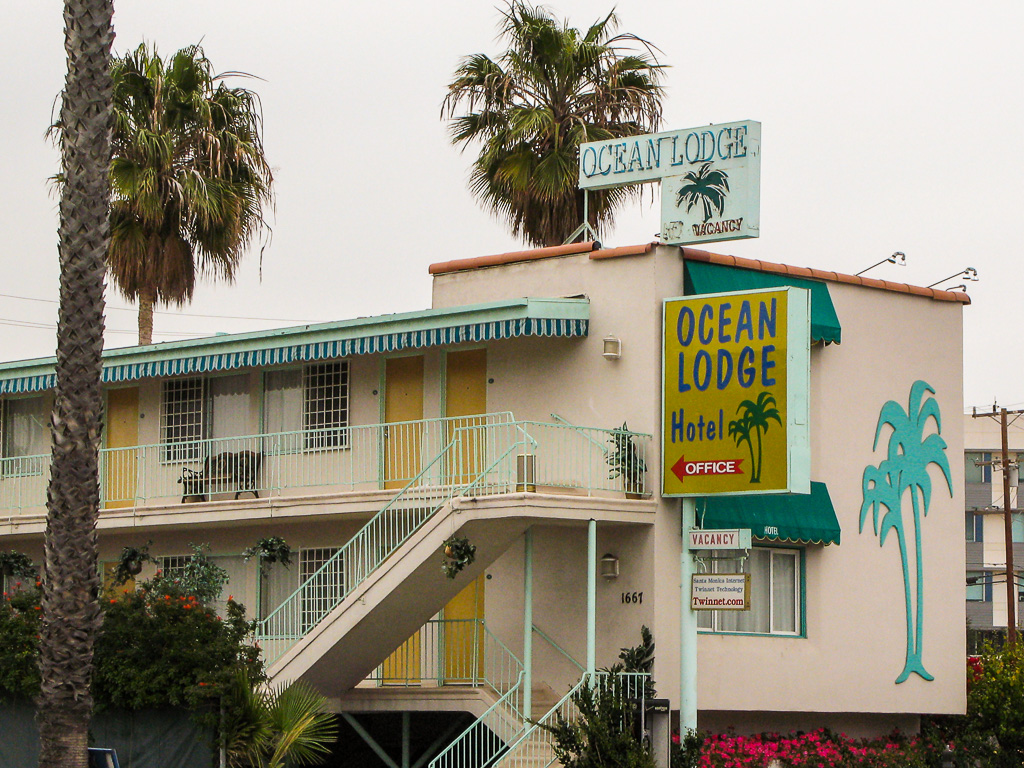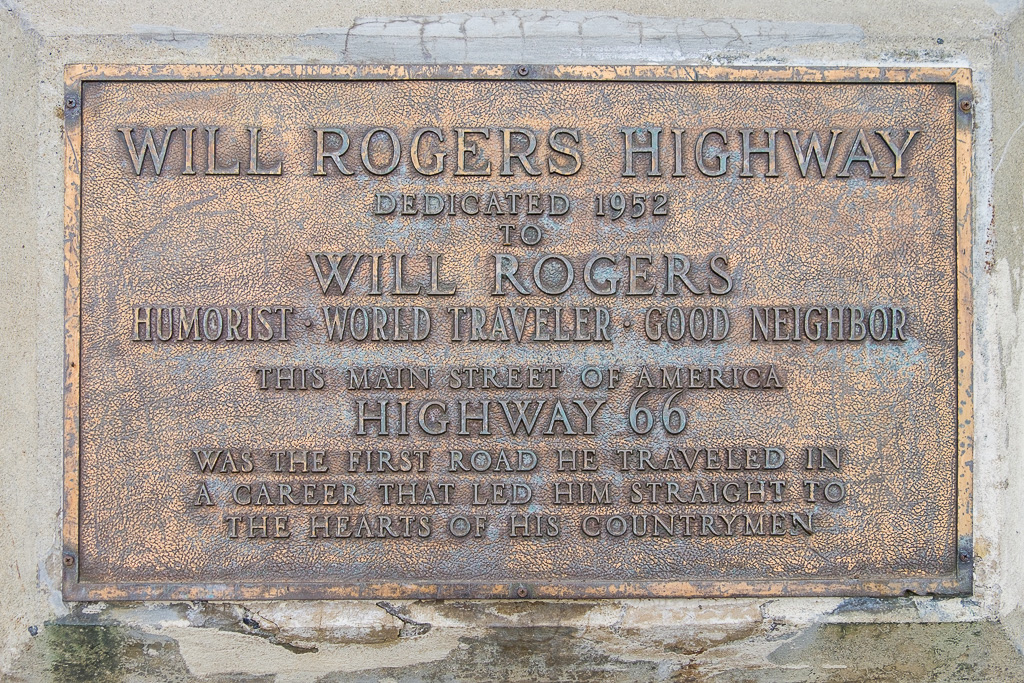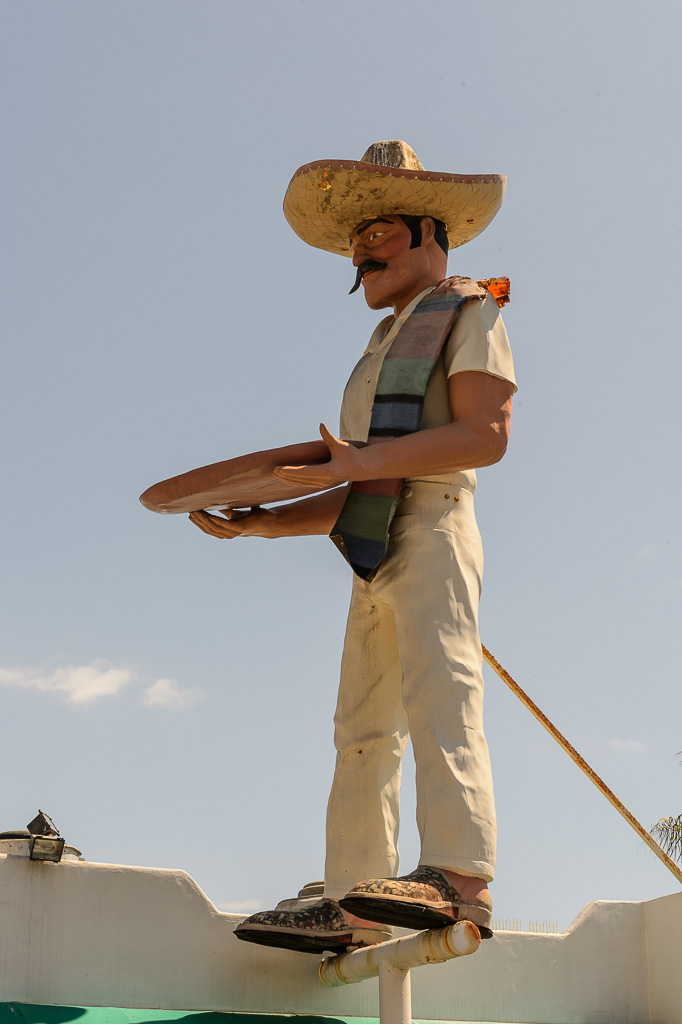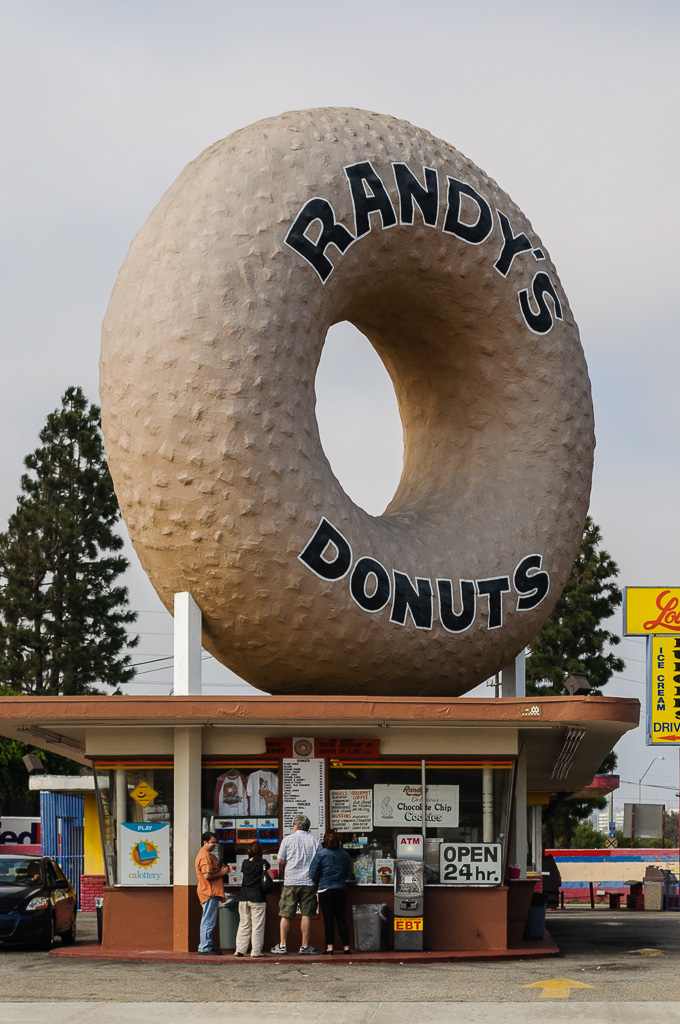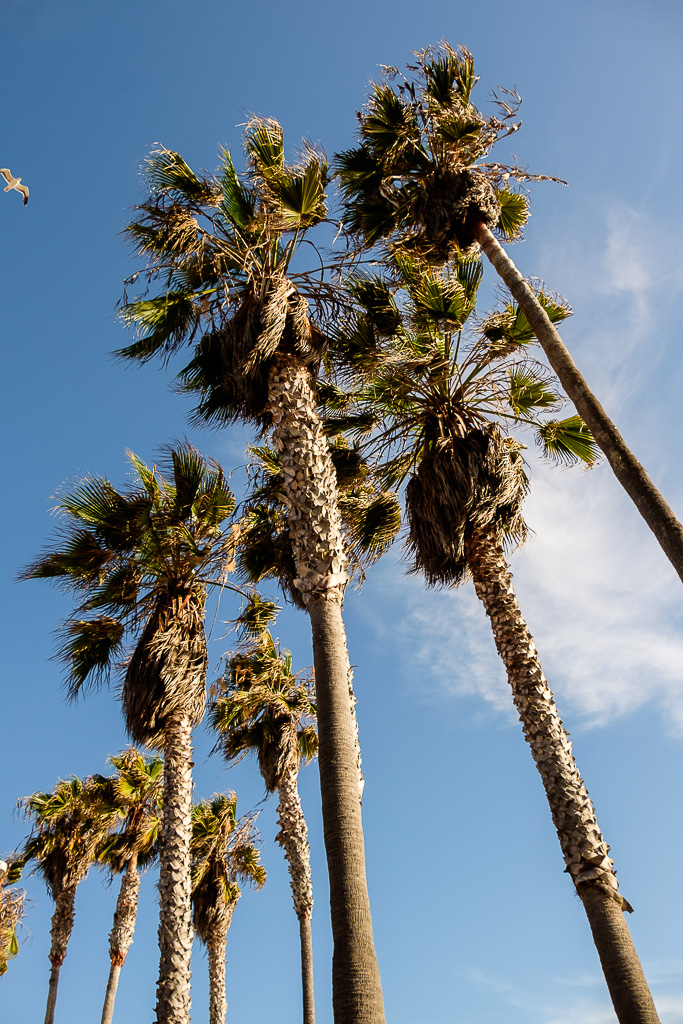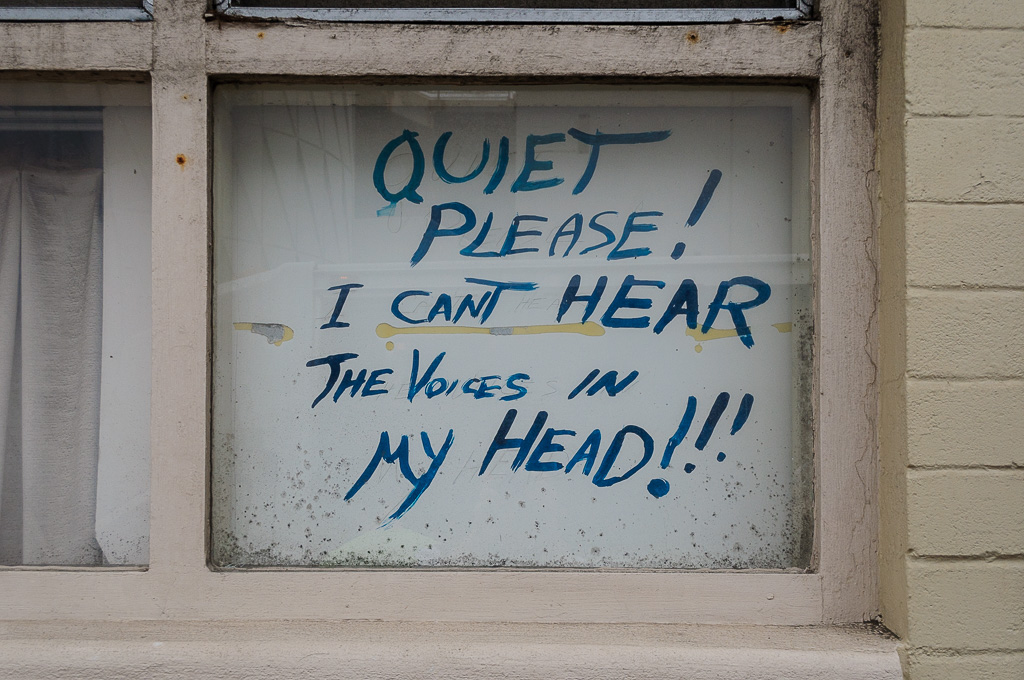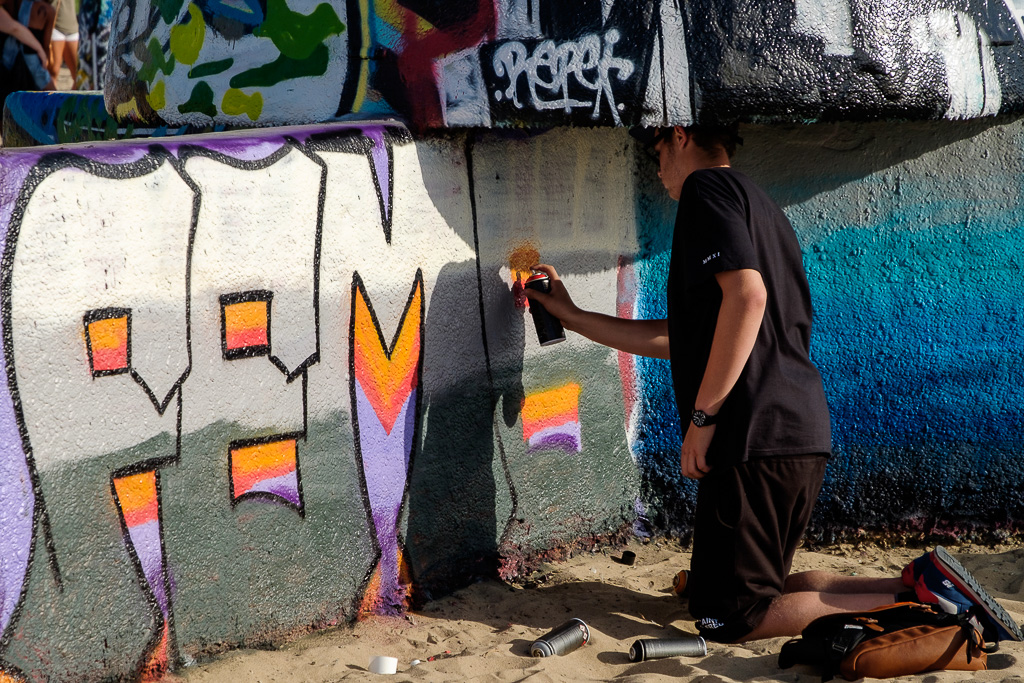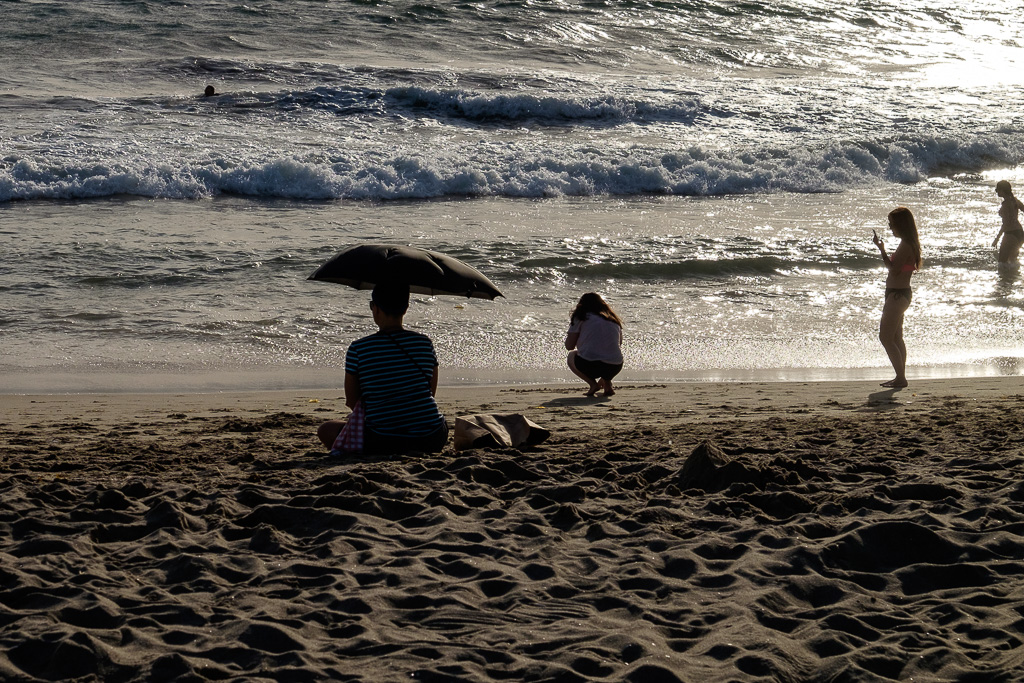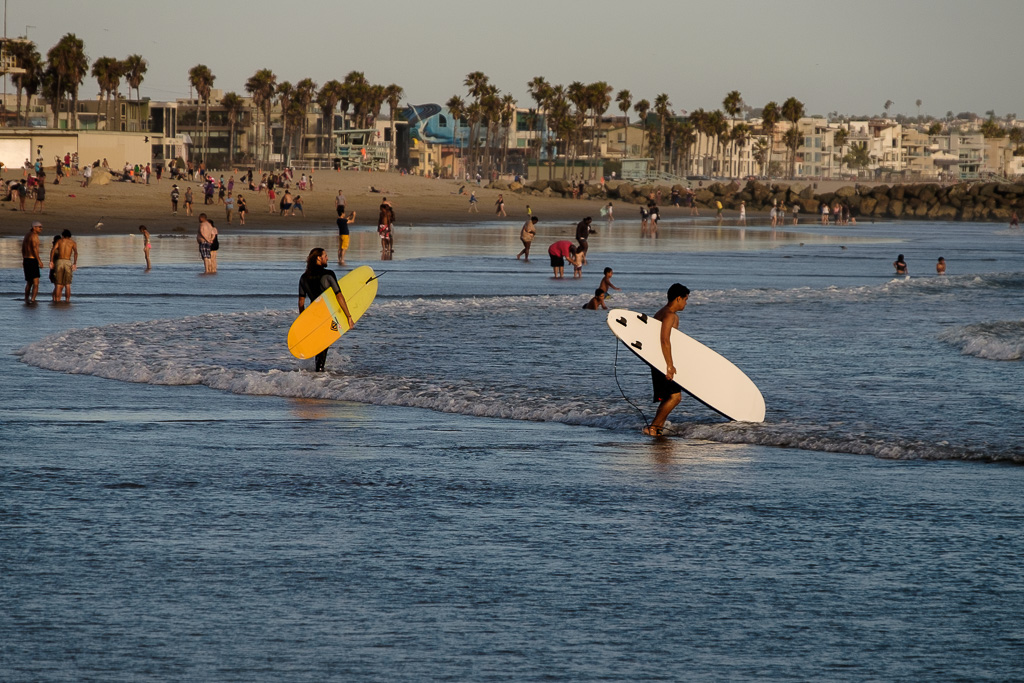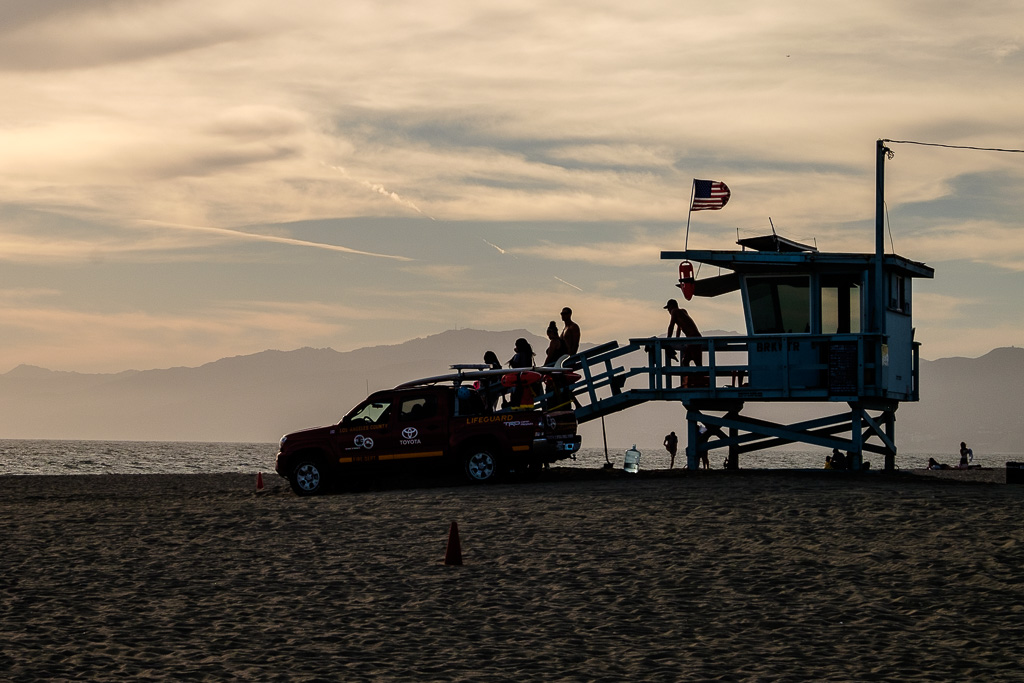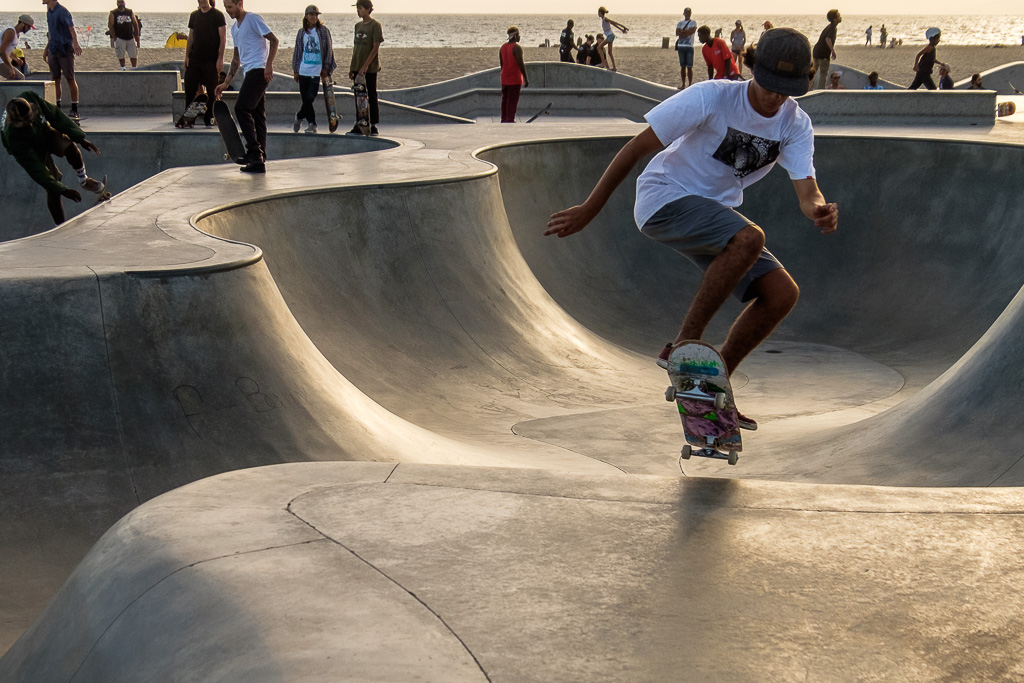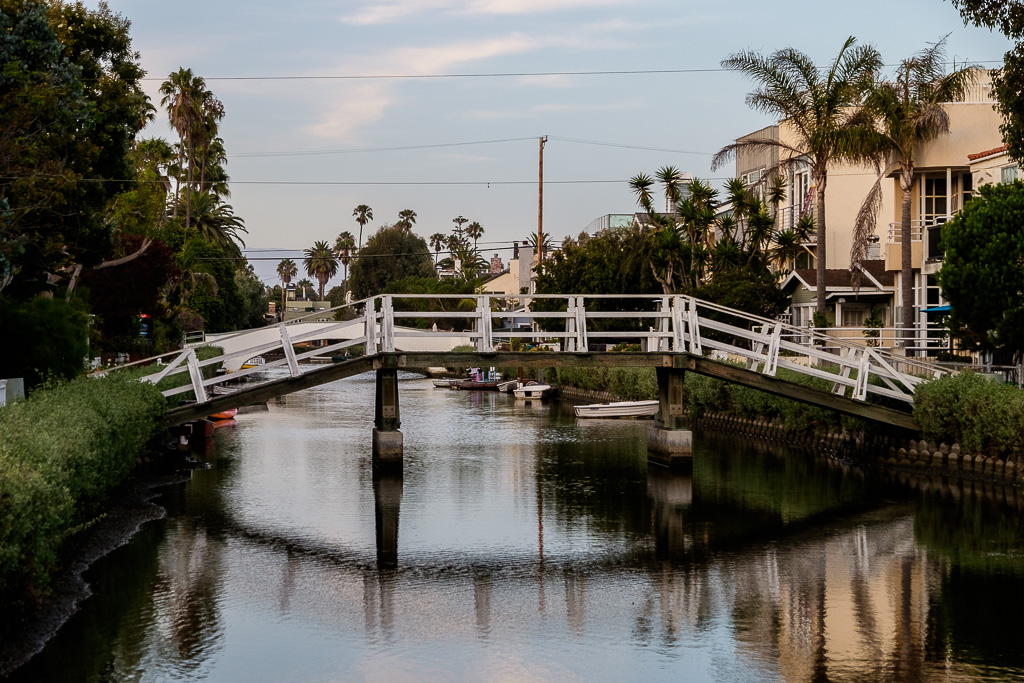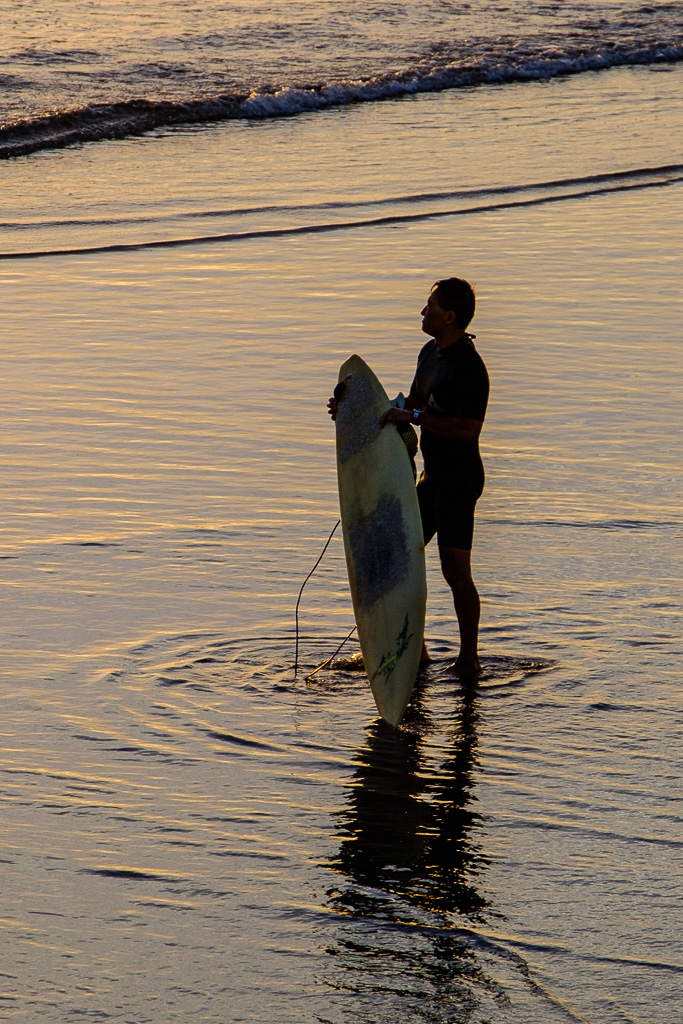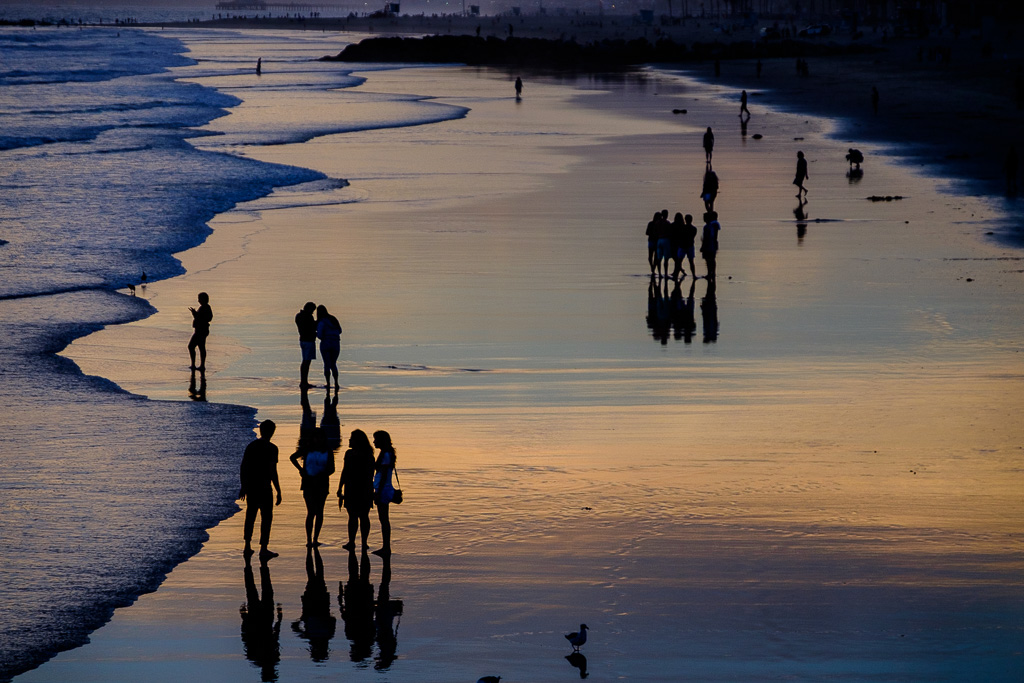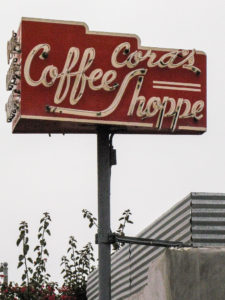 Hollywood to the Pacific
Hollywood to the Pacific
You can see all the stars as you walk down Hollywood Boulevard,
Some that you recognise, some that you’ve hardly even heard of.
People who worked and suffered and struggled for fame,
Some who succeeded and some who suffered in vain.
Everybody’s a dreamer and everybody’s a star
And everybody’s in show biz, it doesn’t matter who you are.
-Ray Davies, “Celluloid Heroes”, The Kinks, 1972
If you liked the old movie palaces in the previous post and didn’t get your fill, then you will like this post. There are more. Even some Hollywood Stars on the sidewalk.
Route 66 from 1936 was extended from the L.A. downtown to Santa Monica. It’s not hard to follow (using 110 – the Pasadena Freeway a/k/a Arroyo Seco Parkway – as the starting point): first take Sunset Blvd. through Echo Park and Silver Lake, and then veer left on Santa Monica Blvd. at the Sunset Junction sign. Then stay on it all the way to Lincoln in Santa Monica for the Western Terminus – about 17 miles. It will take you through Hollywood, West Hollywood and Beverly Hills, along the edge of Westwood (just a few blocks away from Westwood Village and UCLA), and finally a little more of West L.A. before getting to Santa Monica. Easy peasy.
Many think that Route 66 ends at the Will Rogers plaque in Palisades Park at the intersection of Santa Monica Blvd. and Ocean Ave. Others think that its terminus is at the end of the Santa Monica Pier. Some of the guides even claim (erroneously) that one or the other is the end of the road. In fact, Route 66 never fully extended to the bluffs at Ocean or the Santa Monica beach below it. Actually, the end point is at the intersection of Lincoln Blvd. and Olympic Blvd. It is about five or six blocks to Ocean and the bluffs from there.
What are the photos in this set? With a few exceptions these are all sites on or very close to Route 66, i.e. Santa Monica Blvd. The first 50 or so shots are all Hollywood or West Hollywood.
First, the Hollywood Forever Cemetery right on Santa Monica just a little bit before Vine (right next to the Paramount Studios lot). Johnny and Dee Dee Ramone both lie there. So do Benjamin “Bugsy” Siegel, Mel Blanc, Don Adams (agent Maxwell Smart) and Carl Switzer (the actor who played “Alfalfa” in the “Our Gang” series). Also Rudolph Valentino , Cecil B. DeMille, Douglas Fairbanks, John Huston, Peter Lorre, Mickey Rooney and many more Hollywood greats.
They screen films at something called “Cinespia” on weekends at Hollywood Forever during the summer and on holidays – on the Douglas Fairbanks Lawn with the films projected onto the white marble west wall of the Cathedral Mausoleum. They do an annual Day of the Dead celebration, and they also hold a memorial for Rudolph Valentino every year. A cemetery as theme park. Only in L.A.
Next, some more Hollywood shots as we proceed westward, including some of the historic theaters on Hollywood Blvd (along the Hollywood Walk of Fame) just a few blocks over from Santa Monica: the Egyptian (1926), the Hollywood (1938), the Pantages (1930); the Vine (1937); the El Capitan (1937); the Hollywood Pacific (1928 – originally known as the Warner Bros. Theatre or Warner Hollywood Theatre); the Vogue (1935); and Grauman’s Chinese Theatre (1927).
The two towers with the “Pacific” signs were radio transmitter towers – Warner Bros. owned radio station KFWB and had the towers on its building.
That shot of the Hollywood sign was taken right by Grauman’s near where the Academy Award ceremony is held.
As in the downtown, some of the old theaters are gone; a number are survivors, restored and operating; some have been converted to other uses (such as the Hollywood); others remain closed with their fate uncertain. I was gratified to see a marquee being fixed up for relighting as I was shooting there last year.
I have included a small grouping of some of the surviving old hotels in Hollywood. Some of these are truly storied such as the Roosevelt. The art deco Sunset Tower is a beauty.
The historic Fontenoy building (1928) is apartments; William Holden used to live there. So did Johnny Depp.
Musso & Franks (opened in 1919) is said to be Hollywood ’s oldest restaurant. Supply Sergeant is a military surplus store founded in 1946.
From Hollywood Blvd. we will cut down to Sunset for Crossroads of the World (1936 – some say it was America’s first outdoor shopping mall), the Palladium (1940) and the mid-century Cinerama Dome (1963) which are all on Sunset – it runs parallel to Santa Monica (more or less) for a good part of the drive. So is the old motel in this set which I don’t think is long for this world. There are very few of those motels left around there, and I think this one will be gone soon, too.
That first deco statue – the “Sheik” statue – is dedicated to Rudolph Valentino and in De Longpre Park in Hollywood (between Santa Monica and Sunset just over from Highland in an area that is a little seedy – Hollywood can be a very mixed bag).
As Santa Monica works its way through West Hollywood, the original Barney’s Beanery from 1920 is still there and open for business. The Formosa Cafe (founded in 1925) is another West Hollywood relic; I understand that it closed at the end of 2016. These Route 66 relics on Santa Monica are few and far between now.
There’s no match cause nothin’ can catch my G.T.O.
Go go G.T.O.
(Jan and Dean, My Mighty G.T.O., 1964)
I spotted the Pontiac GTO in West Hollywood across the street from Barney’s. It is our second-to-last car photo.
Johnie’s Coffee Shop (1956) is not far away from the path of Route 66 to the west at the corner of Wilshire and Fairfax; although it’s not in the immediate vicinity of Santa Monica Blvd, it is such a great example of the “Googie” architecture evoking the 50s and 60s era of Route 66 (as much of L.A. does) that I will also include it. Now closed, it became “Bernie’s” during last year’s campaign.
Proceeding to Beverly Hills, the Beverly Hilton (located right where Wilshire crosses Santa Monica) is yet another storied hotel and a mid-century classic. The Golden Globe award ceremony is held there. Right by the Beverly Hilton where Wilshire and Santa Monica meet is a little park with the “Electric Fountain” (1931) complete with deco statue atop the fountain symbolizing a Native American rain prayer.
On the way to Santa Monica one passes by Westwood; it is a short detour to the theaters in Westwood Village and UCLA. The Fox Village Theater opened in 1931, and the Fox Bruin across the street opened in 1937. A bit closer to Santa Monica Blvd. (right by the corner of Wilshire and Westwood) is the 1940 Crest.
On to the Pacific from there – to Santa Monica and nearby Venice.
That classic sign at the former Bay Shore Lanes in Santa Monica dates back to 1958. The bowling alley survives – so many of these old bowling alleys are closed now – and is now Bowlmor Santa Monica. The “Bowlmor-mobile”—a 1957 custom Cadillac – out front is our very last car shot. We have seen a few cars on these posts, eh? I had a nice chat with the two bowlers standing by the car; they were on their way in and stopped to chat. Both are originally from Britain and came to the US a good 30 or 40 years ago. I told them I was a fellow Brit (I am – I got my passport a few years ago), but I got the usual reaction that I do not sound like one (which is too true). They said they prefer the weather in Santa Monica. No surprise there.
There is a good deal of surviving deco in Santa Monica, and I have included the following (our last deco of this long Route 66 road trip): the Bay Cities Guaranty building on Santa Monica (1930) (also called the Clock Tower); the Georgian Hotel on Ocean (1933) which is a great place to stay; Santa Monica City Hall (1939) which is considered to be an outstanding example of the Public Works Administration (PWA) “moderne” style of architecture; the Vanity Fair Apartments (1935) on Third); detail of the floral bas relief zigzag parapet of a 30s commercial building on Wilshire (at Second); the Mayfair Theater terrazzo paving (1939) on Santa Monica; and motifs along the roofline of the former Lido Hotel (1931) on Fourth.
The Will Rogers plaque is at Ocean and Santa Monica and was placed there in 1952. As mentioned, it’s not the actual end of the road but many consider it the “spiritual” terminus of the Mother Road. It reads:
“Will Rogers Highway, dedicated 1952 to Will Rogers, Humorist, World Traveler, Good Neighbor. This Main Street of America, Highway 66 was the first road he traveled in a career that led him straight to the hearts of his countrymen.”
The beach and the pier are close by. The Santa Monica Pier sign is from 1941.
After including so many of them in the prior Route 66 posts, I feel compelled to include one last Muffler Man – “Taco Guy” is up the coast a little on the “PCH” (Pacific Coast Highway) from Santa Monica in Malibu. At least he was there when I took the picture in 2014. It was at a Mexican dive near the Malibu Pier called “La Salsa” which I understand is now closed. I don’t know what has happened to Taco Guy but I hope he is still there. Remember our first Muffler Man? In the very first post in February there was the Gemini Giant (Space Age Muffler Man at the defunct Launching Pad drive-in in Wilmington, IL).
Randy’s Donuts (1953) is a little farther afield (down the coast a bit near LAX) but it’s such a throwback that I will include it in the set anyway. I can’t resist – this is about time travel after all! On the way to the airport after concluding a Route 66 drive, check it out. An L.A. classic. How may times have you seen that iconic giant donut on TV or at the movies? They are pretty good donuts.
It is not a long walk to nearby Venice (and there are bike rentals at the beach in Santa Monica for those wanting to ride there). Venice is a hoot. The last 12 photos in this set were all taken in Venice (which has come a long way from its days as the “Slum by the Sea”). I took the two sunset-at-the-beach shots from the Venice Beach Pier. I got lucky with the light.
Well, that’s it. Let’s end the trip with these shots in the waning light of the day at the Pacific Ocean. The Route 66 posts are a wrap (at least for now).
We have reached the end of the road.

